12 Days in Taiwan Travel Guide – Itinerary to Explore the Entire Island – Going Awesome Places
This article may contain affiliate links where we make a small commission for purchases you make from links that you click from this article. For more details, read the disclosure page
Taiwan is known by many names but perhaps the most memorable one is Formosa. Now that sounds a bit odd but it was in fact coined by Portuguese explorers in the 16th century. Ilha Formosa directly translates to “Beautiful Island” and they sure got it right.
Between the energy of the dynamic urban cities, bustling of the famed night markets, colourful culture, fascinating history, incredibly friendly people, and dramatic landscapes, you’ll be amazed at just how much awesome can be packed in this island.
This 12 day Taiwan itinerary (just short of two weeks) follows our journey around the entire island and is geared towards those that have the curiosity of a tiger and the adventurous courage of a dragon. Now I will say it is a trip that required a bit of stamina to keep up but for the limited time we were there, I’m so glad we were able to see and do all the things we did. That said, feel free to mix and match as you craft own trip as I know many of you are looking for a Taiwan 7 day itinerary. As with all of our trip guides, I like providing as much detail as possible to make your planning that much easier.
Mục Lục
12 Day Taiwan Itinerary Pre-Trip Guide
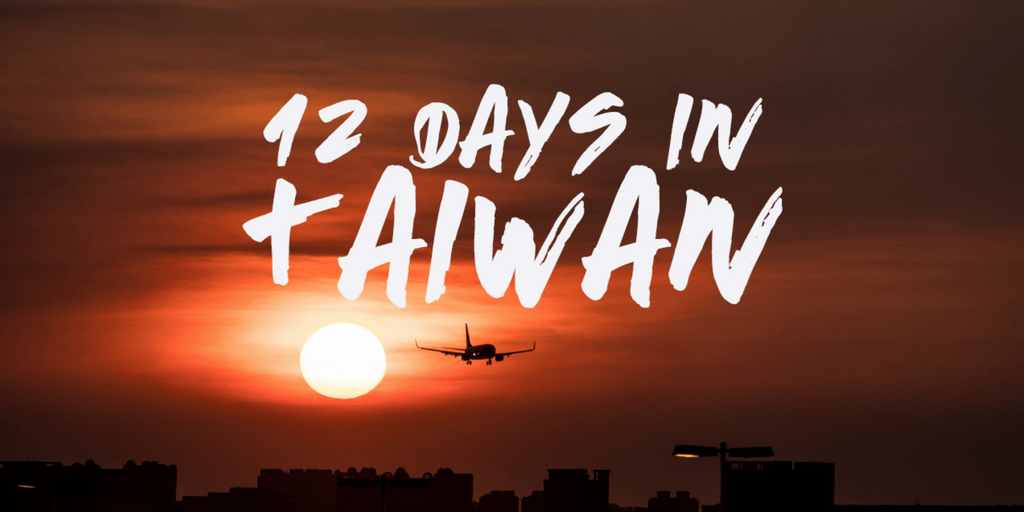
Currency
Taiwan currency is the New Taiwan Dollar ($NT). TWD is also another symbol that is used.
- Mental math for North Americans: To convert things quickly in your head, cut one zero and we divided by 3. This brings it closer to USD. For CAD, you just “add a little”.
- Quick reference print outs: Oanda’s fxCheatSheet is pretty handy.
- App: For iOS users, I recommend the free app xCurrency.
Power
Taiwan uses the exact same electrical standard as North America: 110V/60Hz AC.
Best Time To Visit
Taiwan goes through a full four seasons however they are less pronounced and they lean towards the humid subtropical climate. It’s all personal preference but the best time to go would be either in late spring (April to May) or autumn (November) for a great blend of comfortable temperatures and smaller crowds. Also keep in mind that temperatures will vary depending on where you are in the country which means it’ll be much warmer in the south vs. Taipei vs. in the mountains.
- Spring (March – May): Very mild and pleasant where only long sleeve is required [Average 15ºC to 27ºC]
- Summer (June – September): Very hot and humid with chances of rain as well. Keep in mind that this is typhoon season as well [Average 24ºC to 31ºC]
- Autumn (October – November): Begins to cool down but is still very comfortable [Average 18ºC to 30ºC]
- Winter (December – February): Jacket season where it can get foggy due to northeasterly winds from Siberia [Average 13ºC to 19ºC]

How To Fly To Taiwan
Flights to Taiwan will vary drastically depending on where you’re flying from. If you’re coming from Asia, there are a number of low cost carriers to choose from including AirAsia, Cebu Pacific, and Scoot. For the rest of the world, the two big national airlines to look out for are China Airlines (SkyTeam) and EVA Air (Star Alliance).
The primary international airport is Taipei’s Taoyuan International Airport (TPE) and for most international travellers, that is where you will want to land. What you may not realize though is that there are alternative airports that you can use to jump to different parts of the country or directly fly into. The two other international airports can be found at Kaohsiung (KHH) and Taichung (RMQ). Another popular airport that you might want to try to search if you’re coming from other parts of Asia is Taipei Songshan Airport in Taipei (TSA).
I had the opportunity to fly EVA Air both direct from Vancouver and Toronto and had a fabulous experience with them. Including a quirky interpretive dance safety video, pre-boarding complimentary tea, some of the best food I’ve had on the plane, and great service.
Where To Stay
There are so many choices for hotels in Taiwan that range from budget to mid-range and luxury. In Taipei, you’ll find the big international brands but across the country, don’t be afraid to book local branded properties. In this 12 day itinerary, you’ll see that we’ve chosen reasonably priced 4 star properties that all managed to impress.
Since you’ll be on the move quite a bit on this itinerary, homestays traditionally may not be a good option but if you can find one that only requires a minimum of 2 nights, you could swing it.
For where to stay in Taipei, make sure to read the neighbourhood guide to find out the best properties you can stay at
For the whole island, look on Booking.com for the best prices.
How to Get Around
Unless you’re travelling to one of the smaller islands of Taiwan (i.e. Penghu or Xiao Liu Qiu), your best bet is to take advantage of the excellent land transportation options that are available.
The best way to cover large distances along the west coast of the island is the Taiwan High Speed Rail (THSR/HSR) which is equivalent to Japan’s bullet train. At a top speed of 300 km/h, you can get from Taipei to Kaohsiung in just over 1.5 hours. In cities and towns that aren’t covered by THSR/HSR, there are traditional trains covered by the Taiwan Railway Administration (TRA).
In the big cities such as Taipei, Kaohsiung, and Taichung, you have an extensive and efficient subway network which is also called the Mass Rapid Transit (MRT) system.
There are always buses to fall back on. In the cities, I’d recommend using them only if you know the route and schedule. That being said, if you’re going to be doing places like Alishan, Kenting, and Taitung, you’re going to need to familiarize yourself with what’s called the Taiwan Tourist Shuttle. These are buses created in coordination with the tourism bureau to make it easier for travellers to get to popular sightseeing destinations. They’re typically more conveniently marked with English which makes things easier.
Taxis are easy to hail in the big cities and if not you can always get your hotel to call one for you. Expect this to be your most expensive mode of transportation.
Scooters are often the preferred way of getting around in places like Kenting not to mention the most fun. Roads aren’t crazy hectic like in Thailand so it’s quite safe. What you need to know though is that they require local motorcycle licenses to drive motorized scooters. Electric scooters are much easier to rent as long as you’ve done it before. If you haven’t, they might reject you or you’ll be required to do a small lesson like we did. If you continue reading the itinerary portion of this guide, you’ll learn why you really need one to get around.
Car rentals are another way to get around that often doesn’t get much attention. Make sure you book in advance and do your research in advanced as English will be at a minimum when engaging with car rental companies and driving directions. Make sure you have your international drivers license.
Lastly, I’d like to mention private drivers as this is another popular way to see the country. These are typically taxi drivers that have their own side business. I never had a chance to book one but did run across a cabbie that told us about his services and read about quite a number of them on TripAdvisor forums. The beauty of this is that you can create your own itinerary and do it in the comfort of a private vehicle, skipping complicated commutes, and saving time as well. It may be hard to find English-speaking drivers but I’m sure they’re out there. This is best used for day trips such as up to Yehliu Geopark, Danshui, Jiufen, etc.
Tips:
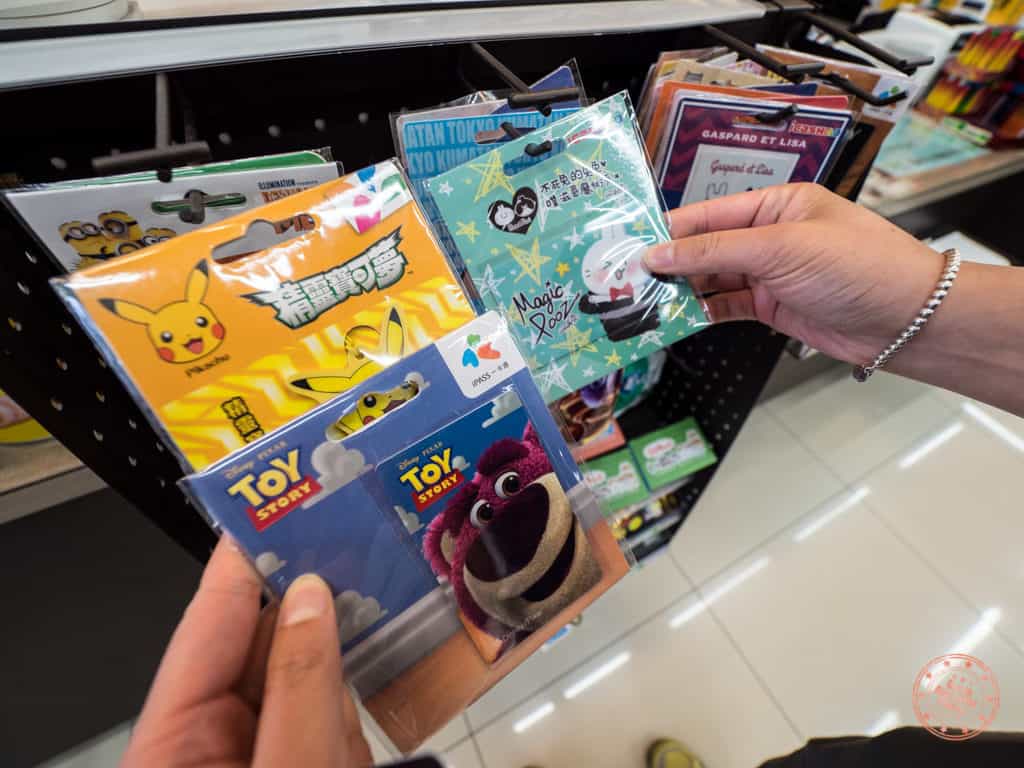 Pikachu (EasyCard), Toy Story (iPASS), and Magic Pooz (iCash 2.0)
Pikachu (EasyCard), Toy Story (iPASS), and Magic Pooz (iCash 2.0)
- What’s confusing in Taiwan is that there are multiple types of contactless cards (EasyCard, icash 2.0, and iPass). I’m not going to pretend to be able to explain differences between them but the one that you want to get is EasyCard as it’s the most widely accepted around the country for most local transit (MRT and buses) and stores. You can buy them at MRT stations but convenient stores like 7-11 and Family Mart sell them too. Warning: 7-11 will try to sell you on their icash cards but make sure you get EasyCard (don’t make the same mistake that I made). The beauty of the EasyCard is that all credit can be refunded at MRT stations whereas it is not easy/impossible with the other cards.
- In Taipei, there is also something called the Taipei Pass that you can consider where you can get unlimited rides for the number of days that you purchase. Personally, I wouldn’t recommend it as the EasyCard is just more hassle free and keeps things flexible.
- Uber is available but isn’t worth it if your ride is less than $NT 35 or if surge pricing is on but on longer rides they can be marginally cheaper. They’re operating in a restricted mode in Taipei only where cars can only drive for Uber if the car is rented from a specific company. You’ll also find that most regular cabs don’t take rechargeable cards nor credit cards so expect to pay cash.
- While Google is pretty good at providing schedules and directions for public transportation especially in Taipei, I’d recommend getting a local to help you when possible especially when it comes to buses.
Do I Need A Visa?
There are a number of visa regulations that depend on your nationality. For most of you, the good news here is that you will most likely be visa exempt or you’ll be able to purchase a visa on arrival, eVisa, or an Online Travel Authorization Certificate. Your best is to get most up-to-date information on visas for Taiwan.
If you’re coming from one of the 60 countries that don’t require a visa, you’re in luck. As a Canadian, all I needed was a passport that was not expiring in the next 6 months, and I was granted a 90 day stay by the customs official after landing at the airport. I didn’t have to visit the visa on arrival desk or anything – just walk right to the customs counters.
Wifi, Data, and Must Download Apps
The most important question is whether you should get a SIM card or a personal hotspot. This comes down to whether you’ll be making calls or not and the answer will most likely be that all you care about is data. If that is the case, you’re going to want to pick up a personal hotspot (pocket wifi). Taiwan’s rates are so cheap for unlimited use and the great thing about it is that you can share wifi with everyone in your group.
I reserved my device from a Chinese site called APTG that rents out WiFun and as unlimited data usage for $NT 100 per day (~$3.36 USD). What I like about them is that you can actually get them to deliver it to your hotel ($NT 180 fee). You just might need someone local to help you out.
If that’s a little complicated, there are also device rental shops right outside of arrivals at TPE. The one I remember seeing is Unite Traveler (find them here).
Before you leave home, here are a few apps that you should download to make your life on the road easier.
- TP Metro– Lightweight app by rGuide that has a map of the Taipei MTR for quick reference.
- Skype – This will be even more critical if you’re going with the personal hotspot option. The few times we had to make calls, having credit with Skype definitely came in handy.
- Google Maps – The offline feature of Google Maps is helpful as a backup if the wifi dies (dead zone or out of battery).
Luggage Storage Solution
One of the things I love about Asia and Taiwan in particular is how good they are with their luggage storage options. This is super handy when you’ve got that awkward in between time from the point you check out into your hotel in the morning and you have to catch a train or bus to somewhere else but still want to explore without lugging it around. That’s when those lockers really come in handy.
The traditional solution – The standard way to do this is to go to find a locker in a train station where there are usually large clusters of multi-sized lockers. They’re not expensive and for instance Zuoying in Kaohsiung only cost $NT 50 for 3 hours. You just have to remember to have cash on hand. The challenge though is that if you’re not near the obvious places for lockers, it’s a bit of challenge to figure out where you can go. The other thing to consider is size. There’s no way of knowing whether the large lockers are available and what if you need somewhere to store something in a fridge?
The Airbnb of lockers – That’s where Lalalocker comes in. Instead of hunting an elusive locker, all you have to do is check their platform to see what lockers are available in your area. All you have to do is book your locker, show up, drop off your stuff, and pick it up when you need it. It’s all part of the share economy where you’ll find locker locations anywhere from restaurants, stores, and hotels. It’s completely safe, and the price is a flat rate of $NT 150 for large luggage and $NT 70 for small luggage for the whole day.
Store your stuff with Lalalocker
Going Awesome Places has an exclusive offer with Lalalocker. Use code GOINGAWESOMEPLACES to save $NT 30 per booking.
Book your storage locker
What To Prepare
This really depends on what time of year you’re planning your Taiwan itinerary and I won’t list out everything we brought but I would recommend you read my previous packing lists for trips to Ireland, South Africa, Ethiopia, and Peru.
For Taiwan specifically, here are a few must-haves that you’ll want to pack and things to consider to make your life easier on the road:
- Power bank – A high capacity power bank such as Anker’s 20,100 mAh, is a must-have in my mind considering the fact that your phone will be your lifeline for on-the-fly translations, maps, transit, and last-minute searches. The personal hotspot devices drain battery like crazy so you’ll need to charge them halfway through the day.
- Waterproof jacket – You never know when it’s going to rain and I sure was glad to have something like the Columbia’s OutDry gear with me.
- Booking your train tickets ahead of time – It was truly a blessing for us to have MyTaiwanTour help with reserving of all the main trains that could be booked based on our itinerary.
Table of Contents
The 12 day Taiwan itinerary
This is how our 12 days looked like during our trip to Taiwan. With this day by day breakdown, you’ll get a clear picture of everything that we did and all the spots that we hit up. Where I can, I also provide personal travel tips (signified by ) so look out for those.

Download this Itinerary
Simply add your email below and click the Download button. Access to the page with this itinerary and others will be given to you right away. You’ll also be enrolled in the weekly flight deal newsletter!
Notice: JavaScript is required for this content.
Interactive Map
>>
Day 1 – Hit The Ground Running In Taipei
<<
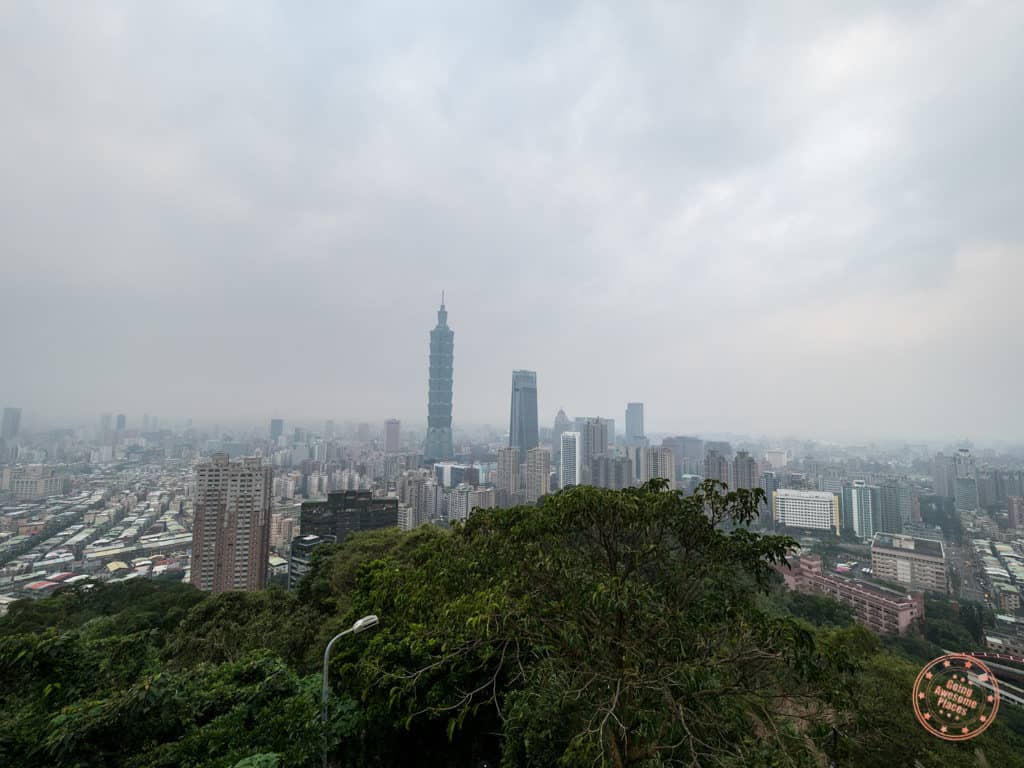
The perfect way to start your trip and get over your jetlag is to arrive in the heart of Taiwan and start wandering. Go and take in Taipei’s iconic landmarks, feed your hunger at the bustling night markets, and jump right into the colourful culture.
With limited number of days in Taipei, you’ll want to make it count and pick the places that interest you to help decide what you’d like to focus on. You won’t be able to do everything but remember that you’ll have the rest of your trip to make up for it.
For me, since I had been to Taipei before, my focus was on places I hadn’t been to which meant cutting out a lot of the highlights that other guides will take you to (i.e. Chiang Kai Shek Memorial Hall, National Palace Museum, Taipei 101, and Longshan Temple). What you’ll see below are all the places we managed to hit up in the first day before there was nothing left in the tank. The focus for the day was primarily food and also getting set up with things like the pocket wifi and EasyCard.
WHAT TO DO
★ Elephant Mountain

The views from Elephant Mountain or Xiangshan are arguable the best in the city and very easy to get to as long as you have it mapped out ahead of time. The path to it will seem a little obscure but once you come out of the subway, you’ll no doubt see other tourists making their way there.
The hike itself isn’t particularly long but I would recommend preparing yourself for some serious stair-master. The ascent is a sheer 20 minute climb but thankfully there are lots of places to stop, benches to rest, and great views from the forest.
Elephant Mountain is but one of the peaks in a collection of trails that make up the Four Beasts Mountains. That said, if you’re like me and primarily interested in that epic shot of downtown Taipei, just focus on hiking straight up until you reach the Six Giant Rocks to get those iconic photos of you on the rock. There’s also big platform below the final steps up that is great for views.
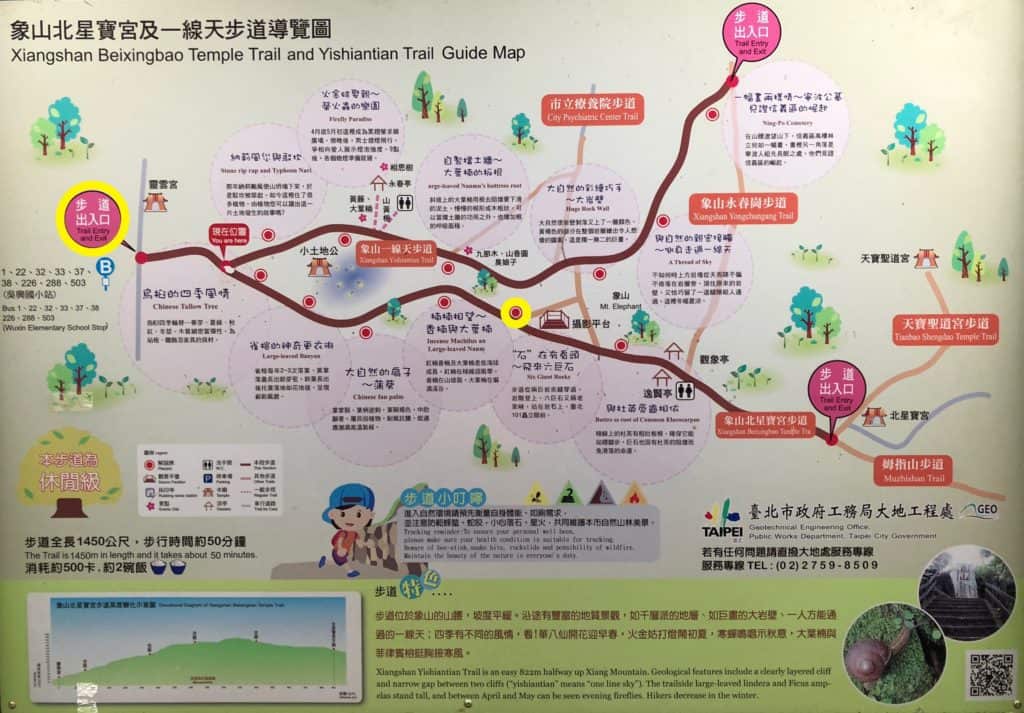 To reach the primary viewing point, start at the far left and make your way to Six Giant Rocks
To reach the primary viewing point, start at the far left and make your way to Six Giant Rocks
TIPS: Sunset is the best time to go as you get the insane explosion of colours if the weather cooperates and past sunset you get the night skyline as well.
WHERE TO EAT
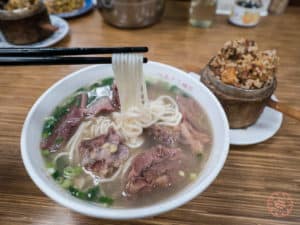
★ LUNCH: Yongkang Beef Noodle
It would be a mistake not to try Taiwan’s famous beef noodle soup. When I arrived, there was a modest line outside the restaurant but turnover is relatively quick here and I was seated within 10 minutes. I ordered the non-spicy version of the beef noodles and spare ribs, both of which were PHENOMENAL. The beef was perfectly cooked in juiciness and fat. The noodles had also just the right amount of bounce. #believethehype
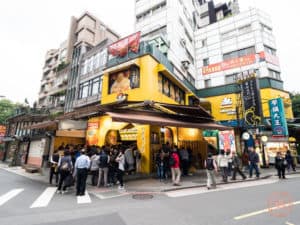
★ SNACK: Smoothie House
You can’t miss this when you walk along the famed Yongkang street. This big yellow building at the corner is home to the mango shaved ice that CNN made famous (or at least that’s what the signs tell me). I ordered the mango shaved ice and it was oh-so heavenly. The shavings from the block of mango ice fluff onto a mountain which translates to a wonderfully light and melt-in-your-mouth taste that you can only equate to eating fresh snow off the ground. If that wasn’t enough mango, you get real mangoes drizzled with mango sauce and then panna cotta to top it off.
TIPS: There’s not a whole lot of seating on the ground floor but what isn’t obvious is that there’s inside seating upstairs.
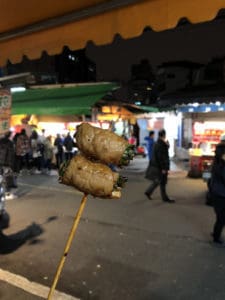
★ DINNER: Jing Mei Market
In search of something a little bit more local and off-the-beaten-path, I was recommended to this night market in the southern part of Taipei. I wanted a night market that wasn’t packed with tourists and I wanted to see where real locals ate. I found it in this night market. The streets weren’t overcrowded here, the food especially the octopus, fried sweet potato balls, sponge cake, and oyster omelette were all very good and noticeably cheaper than what you’d find in Shilin night market. It’s not a large market but I quite enjoyed that it wasn’t overwhelming.
WHERE TO STAY
★ The Sonnien Hotel (2 nights)
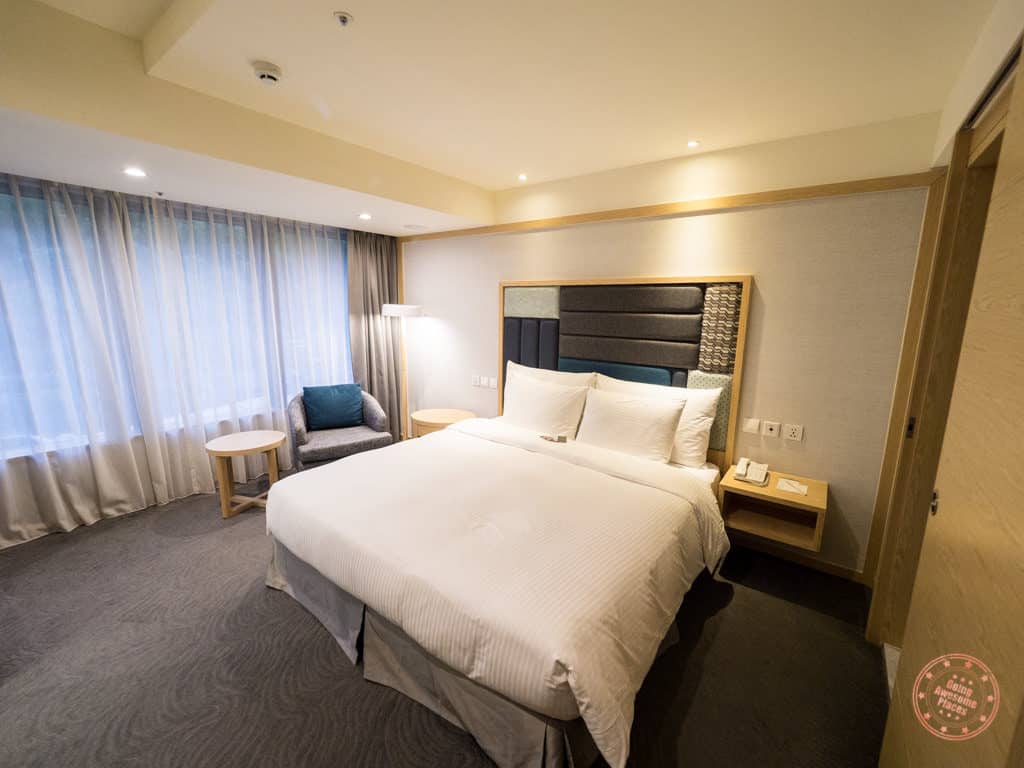
We couldn’t have asked for a better hotel to start the trip. Modern, clean, and the most fluffy of beds, it was just the right size and conveniently located.
Walking distance to Yongkang Street and equidistant from Daan Park station on the Red line and Zhongxiao Xinsheng on the Blue/Yellow line, we had no trouble getting to everywhere we wanted to go our first two nights in Taipei.
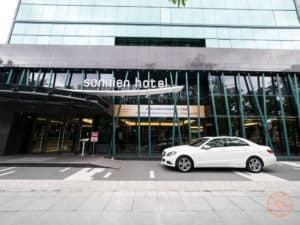
The buffet breakfast included with our stay was also fabulous with everything from hot dishes like noodles, stir-friend vegetables, dim sum, salad, congee, and miso soup. It was so good that I often regretted eating so much because there was so much other food to eat throughout the day!
TIPS: If you arrive super early in the morning like we did, I actually booked an extra night’s hotel so we wouldn’t be forced to hit the road right away. Instead, the room was ready for us and I was able to take a nap.
CHECK RATES
Table of Contents
Save money on your trip to Taiwan
I travelled through Taiwan primarily through the help of a local company on the ground called MyTaiwanTour. They were the ones that booked my train tickets and hotels which made my life so much easier. They are an operator based out of Taipei and specialize in custom-tailored solutions and English-based packaged tours around Taiwan. I highly recommend them!
Save 5% on tours with MyTaiwanTour by using code WILL19.
BOOK
>>
Day 2 – Spirited Away
<<
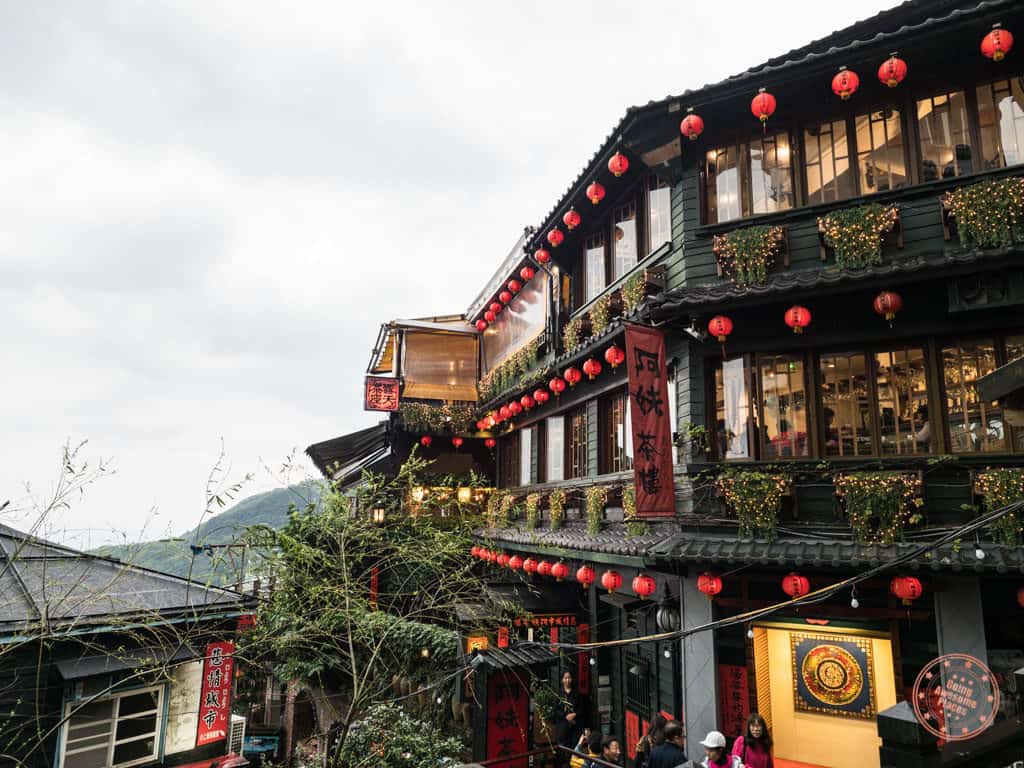
After a day getting your fill of a few of Taipei’s highlights, it’s time to shake things up and head north. What’s there you ask? If you’ve ever wanted to launch your own sky lantern, explore the remains of a Japanese gold mine, and walk through streets that inspired Miyazaki’s classic “Spirited Away”, you’re in for a treat. And yes, you get to do ALL of that in a day.
A post shared by Will ✈🌐 GoingAwesomePlaces (@goingawesomeplaces) on Dec 5, 2017 at 2:58pm PST
WHAT TO DO
★ Jiufen and Pingxi Day Tour with MyTaiwanTour
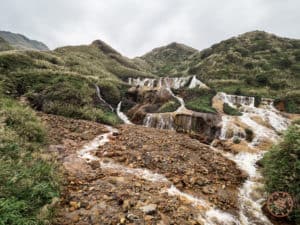
One of the things I love about Taiwan is that it isn’t very hard to get away from the hustle and bustle of the big city and get a big dose of charm, history, and culture in the northern towns. Choosing MyTaiwanTour was a no-brainer as they made it really easy to book online and is the English speaking tour that we were looking for.
In our spacious van, our group of 7 spent the day exploring these spots:
- Jinguashi Mines: Coming into Taiwan, I had little knowledge of its Japanese occupation past and this was my introduction to what is fascinating history. Front and centre in the Shuinandong area are the remains of a very serious mining operation as you get to see from afar and close up the abandoned buildings, funicular, tunnels, and land-based smoke stacks.
- Golden Waterfalls: Located just a bit further up from the mines, watch the water tumble down what really does look like a gold-laden waterfall.
- Jiufen: Once a prosperous gold mining town, Jiufen is now a popular tourist destination known for being the inspiration of Myazaki’s “Spirited Away”. Spend just a few minutes here and you can see why it has that enchanted quality to it. Adorned with strings of red lanterns, old tea houses, and streets lined with delicious local treats, we were let loose here for lunch. My only regret is that it we easily could’ve spent more time getting lost in its maze of alleyways.
- Shifen Old Street in Pingxi: If you’ve ever wanted to get the FULL experience of building a giant sky lantern from scratch, write your own wishes, and launch them to the heavens, consider your dreams fulfilled. What makes this even more picture perfect is that you get to do this in a small town while standing in between live running train track.
We came out of the tour with a better appreciation for Taiwan’s history, our tummies filled, and our wishes delivered. I would highly recommend this day trip as it’s one that would be very difficult to do on your own and I very much enjoyed the service of our guide and driver, Summer and Tom.
WHERE TO EAT
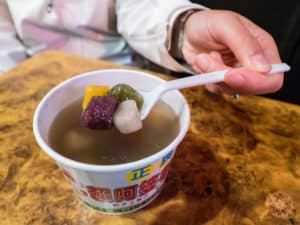
★ LUNCH: Jiufen
Sure, Jiufen does get insanely packed with tourists, but we we didn’t let it bother us too much because we were hungry hippos on a mission. Our guide, Summer, gave us a few tips on what to look out for and then we were unleashed!
Here is what we picked up along the way ( for our favs):
- Stinky tofu
- Sweet glutinous balls
- Fish balls
- Mochi on a stick
- A-Zhu peanut ice cream roll (九份阿珠雪在燒)
- Taiwanese meatball
- Bubble tea
Total damage? $325 TWD which is equivalent to a $11 USD lunch for two. DEAL!
★ DINNER: Shilin Night Market
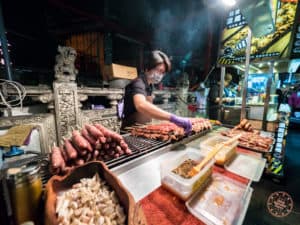
This is perhaps Taiwan’s most famous and largest night market and with its grid of streets lined with a variety of traditional, western, and local cuisines and merchandise. It’s very much a choose-your-adventure kind of experience where you’ll start off in one corner of the market and slowly make your way to the other side. Just make sure to come with an empty stomach.
MyTaiwanTour was kind enough to give us the option for drop-off after our day trip and mentioned Shilin Night Market as an option. We jumped on the opportunity because it is a bit of a distance from the Taiwan core and you really can’t say no.
TIPS: Make sure to try fried pork buns, bubble tea, wild boar sausage, and octopus. Beyond food, I highly recommend dropping a few coins on any one of the claw game booths, try your hand at one of the carnival games and the underground floor that is part of the covered section of Shilin.
WHERE TO STAY
★ The Sonnien Hotel (2 nights)
Table of Contents
>>
Day 3 – Winding Up In Alishan
<<
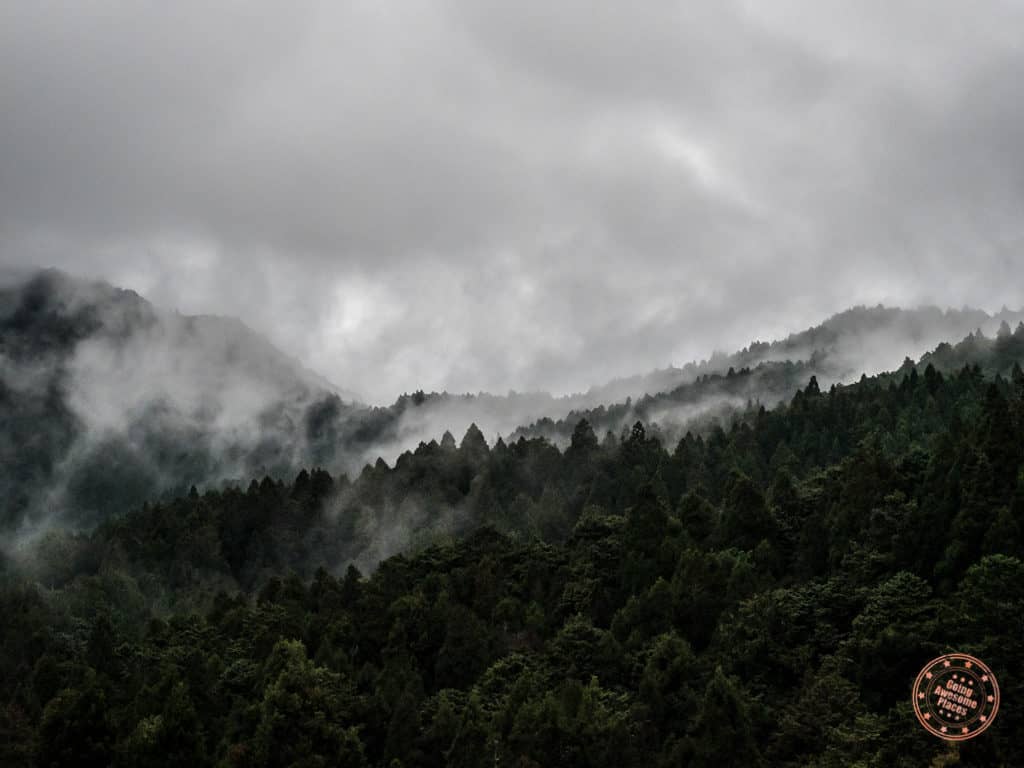
Alishan is one of Taiwan’s most visited national park and for good reason. Located way up above the clouds, it’s here that you’ll find the most magnificent terrain of giant red cypress trees that are more than 2,000 years old, Rivendell-like hiking trails, and trains from a different era. This region is also well-known for its tea because it is grown at such high altitude.
The tricky thing about Alishan though is that it’s quite the journey to get there and one that isn’t necessarily the most clear when it comes to English instructions. When constructing your itinerary, you’ll also quickly realize that you easily need to account for 2 days to make it work. As a result, this day is dedicated to getting to Alishan which is quite the adventure on its own.
HOW TO GET THERE
There’s so much information about this that it really deserves its own dedicated article so make sure you read the full guide on everything you need to know about Alishan.
WHAT TO DO
★ Fenqihu
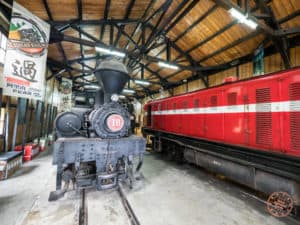
Since we elected to take the bus up to Alishan, we could have easily bypassed the small town of Fenqihu but I’m sure glad we didn’t.
Fenqihu is an old town that used to be a legitimate refuelling stop for the trains heading their way up to Alishan for what used to be a lumbering operation. Today, it is mainly a rest stop for travellers that want to see the fascinating railway museum, the old street which features food specialities, similar to that of Jiufen, and most importantly their famous ‘Fenqihu bento box’.
TIPS: There are lockers at the train station for $NT 30 for 3 hours which is perfect for your refuelling stop.
★ Sunset from Alishan House
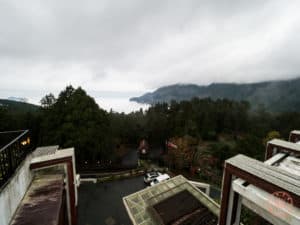
Psst…I’ll let you in on a secret. The sunsets from Alishan House are just incredible. Now I probably shouldn’t be telling you this but whether you stay there or not, I would recommend sneaking inside and going up to the 8th floor observation deck. If you’re lucky, you’ll see the sea of cloud that Alishan is known for.
I ended up showing up here towards the end of the sunrise because I wasn’t sure if the rain would dissipate but when I got there it did. I had a mind-blowing 20 minutes filming a timelapse of the waves of clouds climbing the mountainside.
WHERE TO EAT
★ LUNCH: Fenqihu Bento Box Place
 Notice the 7-Eleven to the right. Entrance to the restaurant is right underneath.
Notice the 7-Eleven to the right. Entrance to the restaurant is right underneath.
There’s probably a more proper name for this place but when you get to Fengqihu, everyone will know what you’re talking about and if not, just follow the posters of the bento box to a 7/11 along the main street. You can either take a bento box to go for $NT 100 or eat in for $NT 120 for the authentic metal container experience.
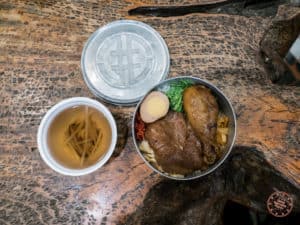
The epitome of Taiwanese comfort food, it comes with a bed of rice with a pork chop, drumstick, tea egg, and a mix of fresh and preserved vegetables. It was the perfect lunch, so much so that we started with one and ended up with two for the both of us. If you decide to eat in, you can also have their mushroom and bamboo shoot soup.
TIPS: If you’re looking for a unique souvenir, you can buy a metal bento containers for $NT 300 (includes the meal). We were thinking about picking one up but they couldn’t confirm whether it was oven safe or not.
★ DINNER: Room Service at Alishan House
The truth is we were exhausted by the time we got to our hotel and it just seemed like too much work to take a shuttle back down to the train station where there were a number of local restaurants. The restaurant at the hotel was also a little expensive for our tastes since it was a buffet ($NT 900 if I remember correctly).
If you’re curious, we ended up ordering fried rice and noodles from Alishan House’s room service but if we had a little bit more energy, I’m sure we could’ve had a better meal at the entrance to the park and near the visitor centre.
WHERE TO STAY
★ Alishan House
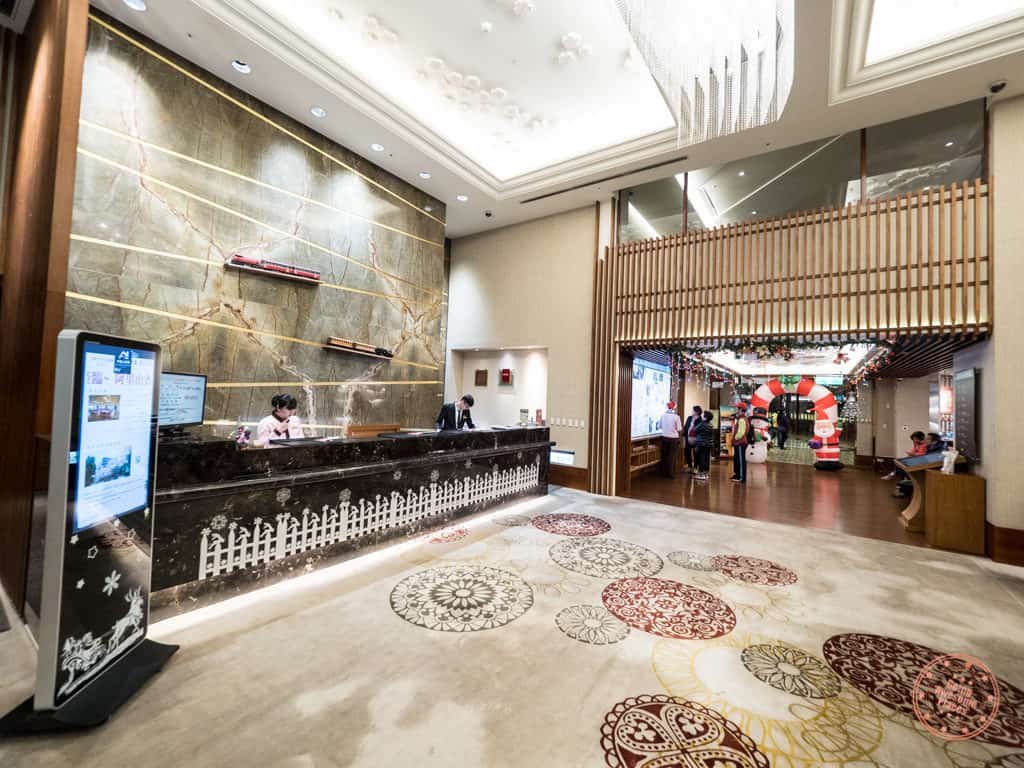
I’m not sure if I’d recommend staying anywhere else if you come to Alishan. It’s one of the few properties that is inside the Alishan Forest Recreation Area and is most definitely the nicest. For quite a reasonable nightly rate, you get a number of bonuses and conveniences that more than make up for the cost.
- Massive room that you can tell was recently renovated, has a huge bathroom, and complete with fireplace and balcony
- Hiking trails in the park start right from the hotel which means you don’t need to purchase additional train tickets from the Alishan station to Zhaoping station
- Complimentary shuttle service to and from the train station
- Convenience of purchasing sunrise train ticket from the front desk
- Willing to hold bags for you as you explore the next day
- The most decadent of breakfast buffets
- The observation deck is just awesome
A nice bonus is that each room comes with a single-serving of the region’s famous Alishan tea.
CHECK RATES
Table of Contents
>>
Day 4 – The Almost Sunrise
<<
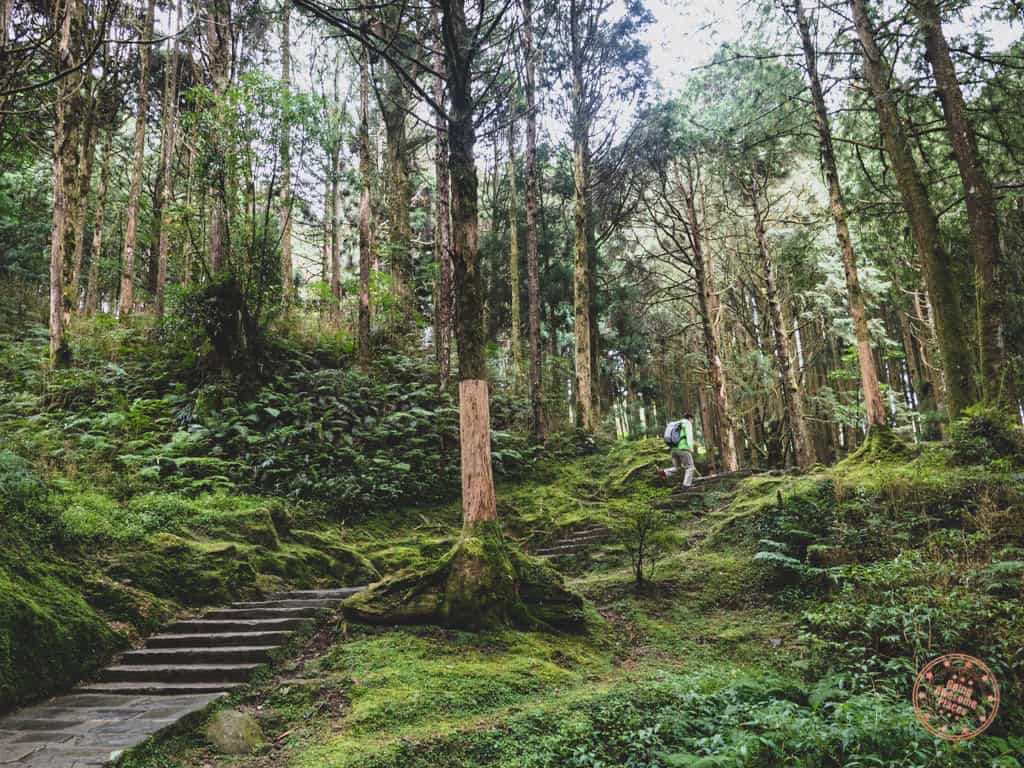
They say there are 5 wonder of Alishan but the most well-known of them all and the one that everyone goes crazy for is the sunrise. There’s good reason for it as it’s apparently ranked #16 in sunrises around the world. Now where that list comes from, I have no idea, but I heard it from the crazy local guy shouting to the crowd of sunrisers so it’s gotta be real right?
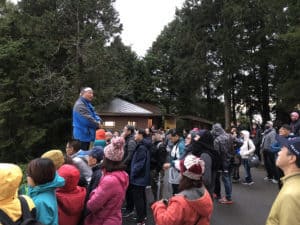
Now I can’t promise that you’ll see a sunrise there but what I can promise you is that the forest trails in the rest of recreational area are quite the magical experience especially when you get that moment by yourself and you feel that you can hear every pin drop. Whether you’re watching the train run through what seems like an ancient track, you’re feeling puny standing beside giant trees that are actually ancient, or you feel like you’re in a scene lifted from the ancient forest of Mirkwood of the Woodland Realm 🤓.
Now what are the rest of the wonders of Alishan? There’s the sunset, forest train, forest trains and cloud sea. What I love about Alishan is that it’s not overwhelmingly large and with one day, you can easily see all the wonders and not feel like you missed out on anything else.
HOW TO GET TO THERE
For a detailed account of how the sunrise works, how to get back down to Chiayi, make sure you read the full Alishan Guide.
WHAT TO DO
★ Alishan Sunrise
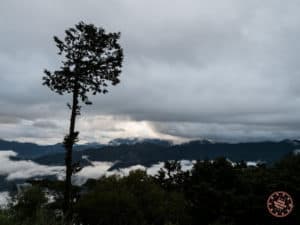
I have no doubt that when you can actually see a sunrise, the view is quite glorious. We weren’t quite lucky enough due to the time of the year but that’s kind of how it goes! That said, I do consider ourselves lucky that it wasn’t a total wash when it came to the views as the sky opened a few times and we also saw the forming and flowing of clouds in the valley beneath us.
The sunrise itself isn’t on any peak called Alishan but in fact an adjacent mountain called Chusan. That is why you have to take a separate train from Alishan to Chusan station so you can rise up to an elevation of 2407 meters to look at the surrounding mountain range.
If you get hungry up there, there are a line of stalls that open specifically for the sunrise. The food may not be very good but it’ll help tide things over until breakfast.
TIPS: The sunrise position changes throughout the year. In the winter time, the sun comes up towards to the right side and in the summer, it’s more towards the left side so pick a spot accordingly.
TIPS: Tripods are allowed but just note that you’ll be jockeying with other people for space so be careful. Also, you’ll notice that there’s a single tree near the middle and beyond the fence that will make it challenging how you want to frame your shot (to have the tree in your shot or not). I started with a wide angle lens but eventually went for a longer lens to capture the detail in the clouds. Just be prepared to adapt to the changing weather conditions.
★ Alishan Forest Trails

Beyond the sunrise, there’s a magical network of trails in the National Forest Recreation Area to be discovered where ancient trees stand tall and a narrow-gauge train runs through. You’ll catch yourself wanting to take photos from every angle here as it’s photogenic everywhere you walk through.
For the full details of how we broke down our day between sunrise and hiking the Alishan forest trails, make sure to read Everything You Need To Know About Alishan.
In retrospect, coming to Taiwan in December and during low season worked out quite well for us in that it never felt like there were an immense number of people which was one of my biggest worries in reading about everyone else’s experiences. The train ride up to Chusan wasn’t ridiculously packed, the trails were never lined with tourists, and the buses to and from the park were never full. Now if you came during high season, I’m sure the experience would be a little different.
What we missed: Giant Tree of Mt. Shuishan and extended hiking trails like the one up to Tashan
WHERE TO EAT
Besides the breakfast at Alishan House, we didn’t actually end up having a proper meal the rest of the day. We just had a bunch of snacks that we had accumulated from the trip so far and things we picked up at 7-11 or Sushi Express takeout we grabbed at the Chiayi THSR station.
By the time we got to our hotel in Kaohsiung, we were both too lazy and tired to head back out.
WHERE TO STAY
★ Hoya Resort Hotel
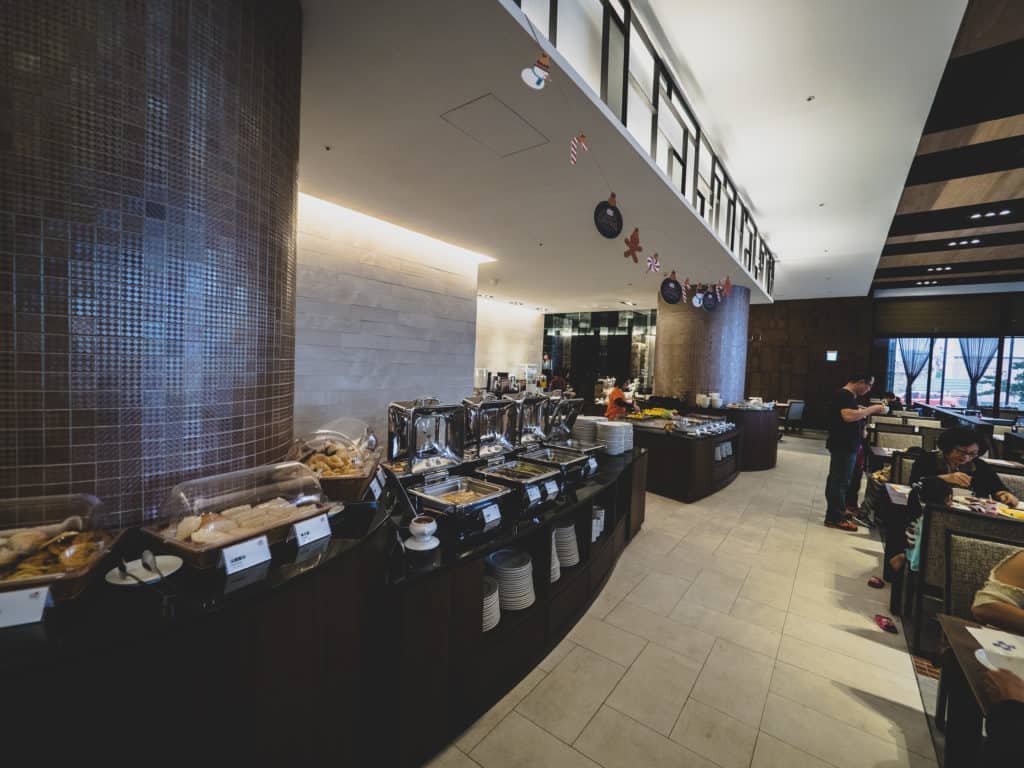
This is a practically brand new hotel in Kaohsiung which was a nice surprise because the room was modernly decorated, very spacious, clean, and comfortable. It’s also neighbour to the Kaisyuan and Jin-Zuan Night Market which is key because the truth is that it’s a little bit far from the centre of the city. Just note that Kaisyuan is closed on Tuesdays and Thursdays, and Jin-Zuan is only open on the weekend.
I usually don’t complain too much about location but once you’re off the subway, there’s quite a long walk without a true sidewalk to get to the hotel or you have to hail a cab which isn’t very convenient. As a result, we didn’t end up going back out the night we arrived. My recommendation would be to find a hotel closer to the Zuoying THSR station or Formosa Boulevard Station (where you’ll find Dome of Light) to avoid the long commute especially if you’er only staying the one night.
CHECK RATES
Table of Contents
>>
Day 5 – Artsy Urban Kaohsiung
<<
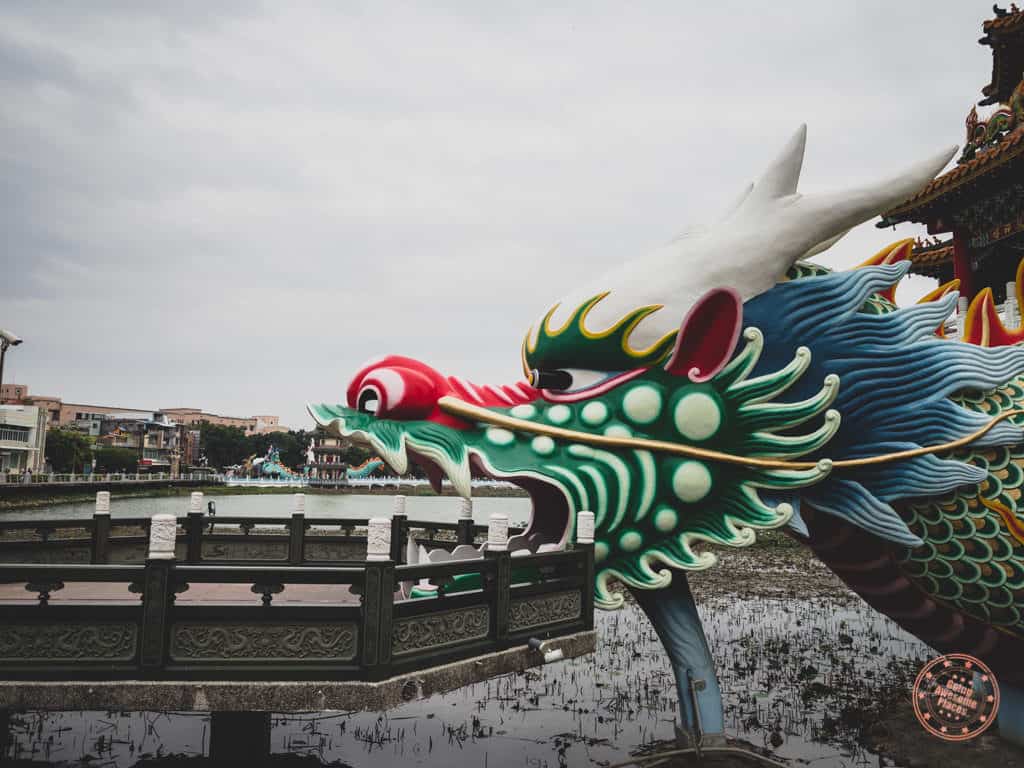
The southern city of Kaohsiung is Taiwan’s second-largest city is nothing like its bigger brother and that’s what makes it such a worthy destination. Where Taipei feels packed in, aging, and sprawling, you immediate feel that there’s so much more breathing room here with its wider streets and modern urban landscapes of skyscrapers, airy cafes, gentrified spaces, bicycle lanes, and ferris wheels on the tops of malls. There are less people rushing around, less cars on the road, and fewer people to be seen.
The biggest surprise of all was perhaps the vision the city had in converting a once-thriving industrial port into a hub of art, design, and entertainment. With its graffiti, art installations, galleries, trendy cafes, and boutiques, it’s the perfect place to wander. We kept making more and more discoveries here that what was supposed to be an hour-long stop turned out to be our whole afternoon.
This is your only day to explore the city before catching a shuttle bus down to Kenting so make the most of it!
WHAT TO DO
★ Tiger and Dragon Pagodas
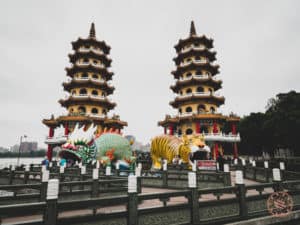
Feel down on your luck and looking for a way to turn things around? Look no further than this beautiful twin pagoda.
Run into the dragon’s mouth and out of the tiger’s mouth, said no one…ever! This little superstition has had locals and tourists alike running through to reverse one’s fortune for centuries. Now whether you believe in luck or not, you’ll still be impressed with the extraordinary detail of the largest paper mache dragon and tiger you’ll ever see.
Climb up one of the pagodas to get a great view of Lotus Lake and the number of other pavilions that line the shore.
TIPS: This is surprisingly difficult to get to mainly because it’s not on the subway line. To save time, I would suggest taking the cab there. We ended up commuting it and learned through a bit of trial and error that from Zuoying THSR station that you have to take the TRA train one stop south to Zuoying Station (I know, not confusing at all). This is where the kindness of locals came in.
★ Pier 2 Art District
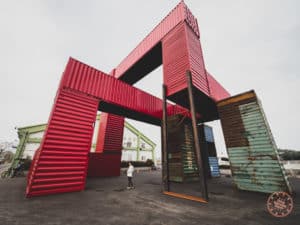
No one would’ve guessed that abandoned warehouses in Kaohsiung’s harbour would be the perfect spot for a quirky arts hub. What they’ve done is truly remarkable by bringing in local artists to completely revitalize an area to become a fresh urban space to spark commerce, tourism, and creativity.
Get your camera ready and strike a pose because you’re going to have a ball roaming through the vibrant spirit of my favourite spot in the city.
TIPS: If you keep going further down on Pier 2, eventually you’ll find SunnyHills which is a famous pineapple pastry shop in Taiwan. Go inside and you’ll be offered tea and a sample of their cake. It’s all free!
★ Dome of Light
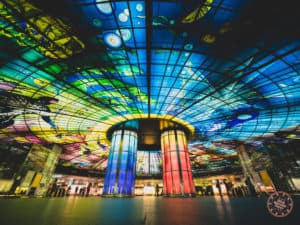
Located in the Formosa Boulevard Station, the main interchange stop on the MRT, this glorious display of coloured glass is something that will make anyone stop and stare for those passing through. What’s impressive about it is the scale of the public installation and how it feels like it belongs more in a Las Vegas casino than a subway station. When you come here, make sure to see if you can spot the four themes of Water, Earth, Light, and Fire.
What we missed: Cijin Island, Love River, and Ruifong Night Market
WHERE TO EAT
★ LUNCH: Gang Yuan Beef Noodles
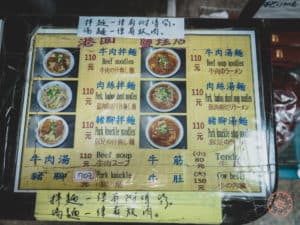
You can’t have enough beef noodles. That is a fact. Being in a new city, we wanted to try another favourite and were not disappointed. As far as beef noodles go, the noodles are perfectly cooked with the right amount of bounce, and the beef, a remarkable balance of fat, juicy, and tenderness. Now if I were a judge, I’d say Yongkang Beef Noodle has the slight edge for the soup base and impossibly tender pieces of beef.
The menu is pretty easy to understand here as there aren’t many choices and as a bonus, since they do get many international visitors, they also have an English menu right up at the counter.
★ SNACK: buonopops
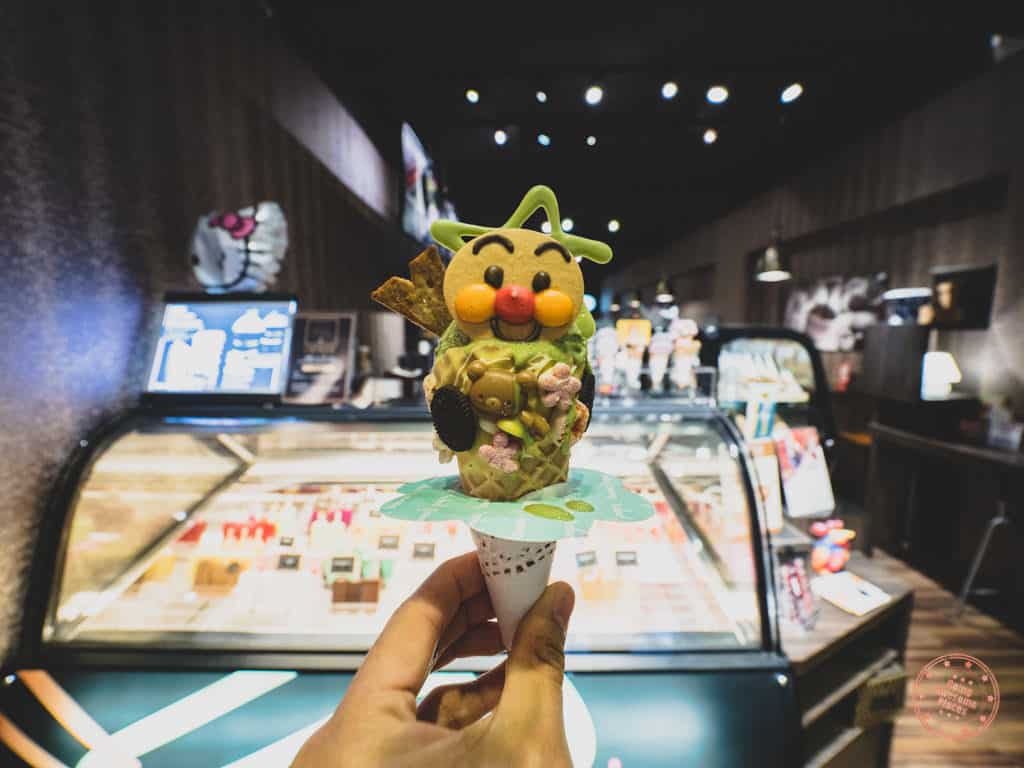
If you’re looking for Instagrammable ice cream, this is the place but when it comes to how it actually tasted, I don’t know if I’d be able to recommend it.
★ DINNER: A-Fei Restaurant
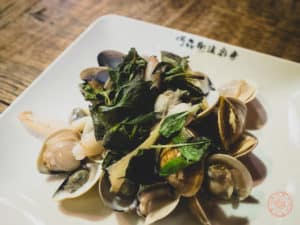
By the time we reached Kenting, it was quite late and so it was perfect that our hotel for the night also had its own restaurant downstairs. This was in fact the first time on our trip we had a sit-down dinner.
We ordered fresh seafood paired with stir-fried vegetables, rice, and beer with live music in the background which made for the perfect end to our day. A-Fei even came by to say hello and chat which was a nice welcoming touch.
HOW TO GET THERE
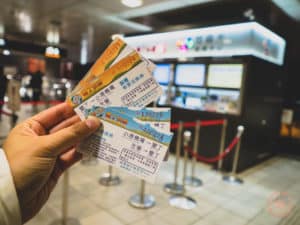
Luckily, getting to Kenting is pretty straightforward. When you’re at the Zuoying THSR station, look for a special booth that sells shuttle bus tickets to Kenting on your way down to metro station. The good thing about this shuttle is that it is quite frequent (practically every 30 minutes from 8:30AM to 7:10PM).
There are two ways you can pay.
- Discounted roundtrip tickets – $NT 600 which has an open ended return date
- Pay with EasyCard – This is already discounted but you’d have to pay the amount of fare required for each leg you make.
If you’re desperate or missed the last bus, there is always the sketchy local people standing at the bus stop offering people direct rides to Kenting.
TIPS: The roundtrip ticket is a pretty solid deal and definitely cheaper than paying through EasyCard. The only downside is that you can’t use your EasyCard credit to pay.
TIPS: If you have a luggage situation for your day trip exploring Kaohsiung, you can either leave your luggage at your hotel if it’s central enough or you can use the super convenient luggage lockers at the Zuoying THSR station. It only costs $NT 50 for 3 hours (little more than $1.50 USD).
WHERE TO STAY
★ A-Fei Surf Inn (2 nights)
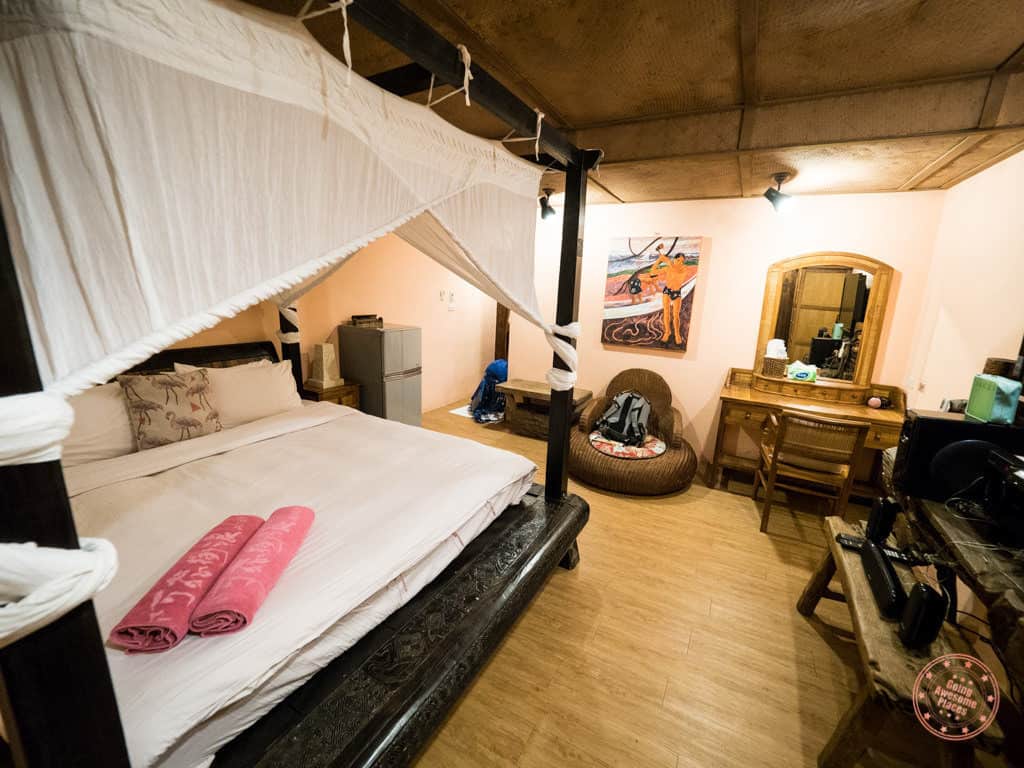
This was probably our big surprise hotel stay of the entire trip and I say that in a good way. Locals and travellers make their way to Kenting because they want to do one of three things: surf, beach, and party. A-Fei ticks off all of those boxes.
We were kind of dropped into this world of A-Fei that pretty much offers everything you would want or need. Want to go surfing? He’s got the gear, the transportation, and instructors. Want to go to the beach? Nanwan Beach is right across the street. Want to eat? Breakfast is covered, and they’ve got fresh seafood cooked to order for lunch and dinner. Want to party? They have live music every night and a super friendly owner in A-Fei himself that loves hanging out with his customers.
I haven’t even mentioned our room yet which is uniquely decorated with an eclectic yet appropriate mix of memorabilia from west coast surfing USA, wood carvings from Bali, and decor reminiscent of Hawaii. It’s a distinct hotel room that gives homage to the great surfing capitals of the world and has a chill vibe that made us feel at home.
CHECK RATES
Table of Contents
>>
Day 6 – The Surf Challenge
<<

Kenting occupies the most southern part of Taiwan and is the country’s very own beach vacation destination with long stretches of sand, big waves, turquoise waters, rugged high cliffs, and low hilly terraces. Locals and travellers alike come to Kenting to escape and experience the outdoors in a carefree way. With the humidity and temperatures up a notch, there’s plenty of activities to do.
For us, it was the first time we were able to shed our rain jackets and long sleeves and were able to trade them in for shorts and flip flops – a much welcome change to our fast-paced schedule. In Kenting, we made the best of it with our mix of water and land-based fun.
WHAT TO DO
★ Surfing with A-Fei Surfing
Staying at A-Fei’s was intentional in that we knew we wanted to go surfing in Taiwan at some point in time. Kenting is the perfect place to do it we learned in the winter as the wind was coming in from a northeasterly direction which meant that Taitung would be too strong, leaving Kenting more favourable for beginners.
We let A-Fei and his team know that we wanted to surf the night before and we were pretty much all set to go after breakfast the next morning. Practically everyone staying at A-Fei’s was surfing so we all got together at 9AM, grabbed our gear (rashgaurd, boots, wetsuit and board), and proceeded to load up a classic Volkswagen T40 hippie van.

Since the waves weren’t looking great across the street at Nanwan Beach, A-Fei decided that we would attempt the beach at Jialeshui which is also where he has his other surf shop and guesthouse (Nanu). We got dressed at the Nanu shop and went down to the beach.
We had grand visions of riding surf like pros in Kenting but as we got down to the beach and received instructions for where we needed to paddle to, it quickly became apparent that we were in way over our heads. With a no-fear mentality, we still jumped into the water with our boards and made it out to where we needed to be but the waves were simply too large for us and we floundered like poor helpless fish. The paddle back to shore was even more difficult as the waves were pushing us into the rocky shore as we tried to maneuver around. I ended up being smacked on the head with my board and my wife in the shin.
 A-Fei showing off some serious surf skills
A-Fei showing off some serious surf skills
Overall, I thought the surfing operation was run quite smoothly end to end where as a group we got transport to the beach, had a place to store our clothes at the Nanu shop, could rinse off, and be driven back to Nanwan. From the beach, I could see that the others were able to rock some serious surf. You just kind of needed to know what you were doing.
Cost: $NT 700 for gear rental (board, booties, and wetsuit)
TIPS: If you’re a beginner like us but have done a few lessons already, let them know that you want to do the beginner surf or tag along one of the introductory lessons. This way you only have to pay for rental but still be within sights of an introduction instructor.
★ Scooter Adventures
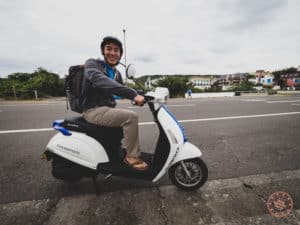
The best part about Kenting isn’t necessarily any specific beaches or sights but it’s the chance to live like a local and drive the most popular form of transportation. You see scooters all over Taiwan but in the big city it’s a little overwhelming so when you get the chance to do it in the tropical south, you have to jump on the opportunity.
What we soon learned though is:
- Beyond the fun factor, you kind of need a scooter in Kenting because there isn’t much of public transit there
- It’s not very easy to rent a scooter as a foreigner – gas powered scooters require a special Taiwan license and battery powered scooters require experience
A-Fei suggested a nearby scooter shop which we visited but when they asked if we had ridden a scooter. I replied honestly “no”. Initially, they said it would be too dangerous for us but then called his boss and said that he would give us a lesson in their other store.
We got picked up and driven to their main store. The lesson itself was pretty simple but I’m glad that they spent the time to teach me how to drive it, do things like make turns on streets, and what not to do. They even watched me drive up and down the street. Once we got the go-ahead, we signed some basic papers and we were on our way.
At this point it was already past 3PM so she charged us half a day’s rental for $NT 500 including the discount since we were guests of A-Fei’s. The nice part is that they said we could return it anytime in the night since they live upstairs and that they’d be able to give us a ride back to our hotel.
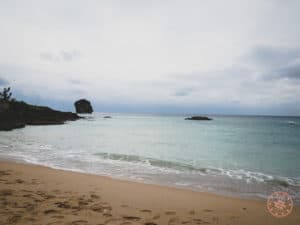
We didn’t have too much time to explore all of Kenting on a scooter but did manage to hit up Sail Rock and Eluanbi Lighthouse before turning back around to do the night market.
TIPS: Kenting is honestly hard to enjoy without a scooter or your own transportation simply because there isn’t much in the way of frequent-enough public transit. Without a scooter, you’re more or less stuck in whatever part of town you’re in.
What we missed: If we had more time, we would have loved to have done a full loop around Kenting and make more stops along the way. ATV-ing was another popular Kenting activity that would’ve been fun to do.
WHERE TO EAT
★ LUNCH: A-Fei Restaurant
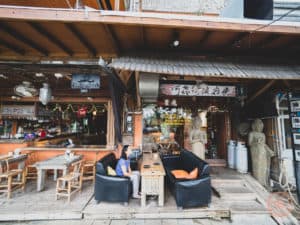
A-Fei convinced us to have lunch at his restaurant downstairs which actually worked out quite well since our room is right above the restaurant. Throughout the morning, he was telling us about his awesome pork and lamb dishes so we couldn’t refuse.
A-Fei hustles hard but he wasn’t kidding about how fresh and tasty his food is. If you’re staying at A-Fei’s, it’s definitely a good idea to have at least one main meal there.
★ DINNER: Kenting Night Market
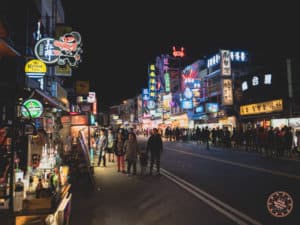
There’s no livelier place in Kenting than the night market along the main downtown drag. What’s incredible about it is that it’s the main artery through the town with regular car traffic passing back and forth but amidst it all are portable carts that get rolled in and massive crowds fill in once the sun goes down.
As far as the food goes, it’s a lot of the standard fare that you’re going to expect to see at any night market. We had an assortment of pastry, fresh coconut, green onion cake, “sausage in a sausage”, bubble tea, and ice cream to round out our meal for the night. There wasn’t anything unique per-say but it was a fun way to cap off our day and having our finger on the pulse of the town.
WHERE TO STAY
★ A-Fei Surf Inn (2 nights)
Table of Contents
>>
Day 7 – Fly With The Wind
<<
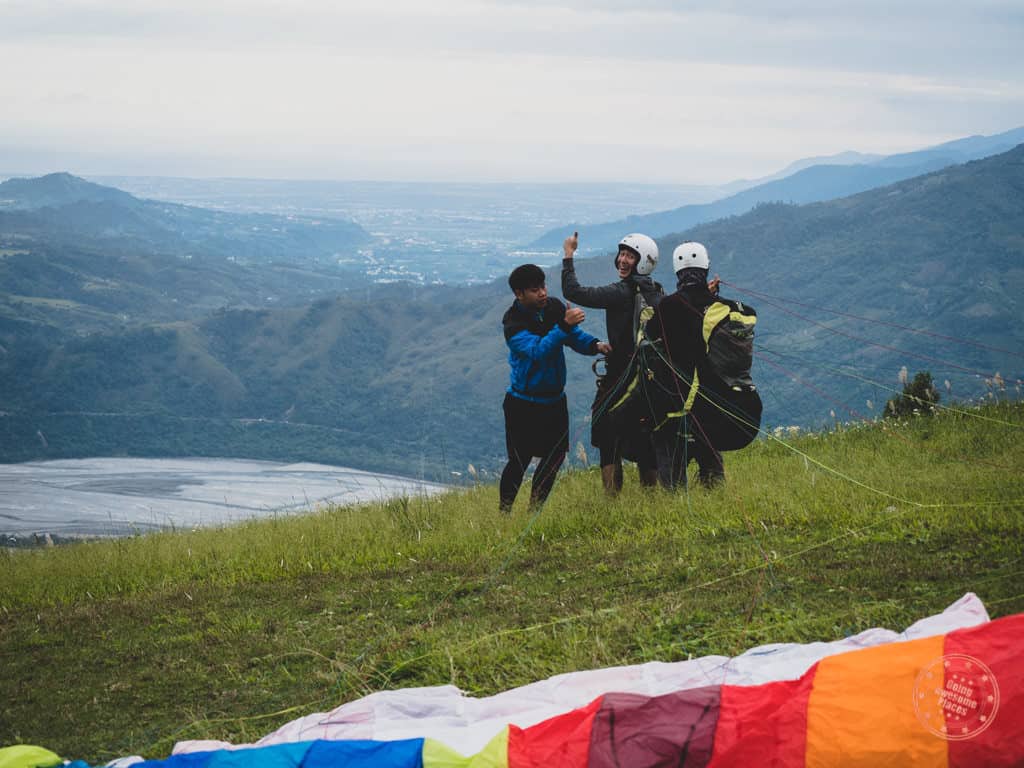
Continuing along the coastline, arrive in the city of Taitung. On the onset, it may not feel remarkable as a destination on its own but stay a few days and you’ll slowly be able to unravel adventure, ecological, cultural and culinary gems that have led to it being dubbed as “garden of Taiwan”.
After a half day commute from Kenting to Taitung, we settle into our hotel for the night but the biggest surprise was to come. I had read that paragliding was a popular activity in the region. Having been yearning to do it for years now, I knew that I had to pounce on this opportunity. With a contact I found online, we called to find out what the situation was. Through my broken Mandarin, I learned that the winds were starting to change and that if we wanted to do it, it had to be that day. We immediately packed our things and hauled ass out of there.
The paragliding experience was a dream come true for us. Soaring through the sky with our feet dangling over the expansive farmland below and surrounded by the vastness of mountains and valleys, my fear of heights was immediately dashed. The crazy thing is that I got to do it twice too.
HOW TO GET THERE
Getting to Taitung
From Kenting, you have to take the shuttle bus back towards Kaohsiung but get off a little earlier in a place called Fangliao. It’s here where you catch the local train that will take you straight into Taitung.
Getting to Luye Gaotai
Waiting for the tourist shuttle bus would have taken too long and so we got our hotel to hail a cab for us. It cost us $NT 700 (~$24 USD) but we managed to get to paragliding spot by 3PM.
Getting Back to Taitung From Luye Gaotai
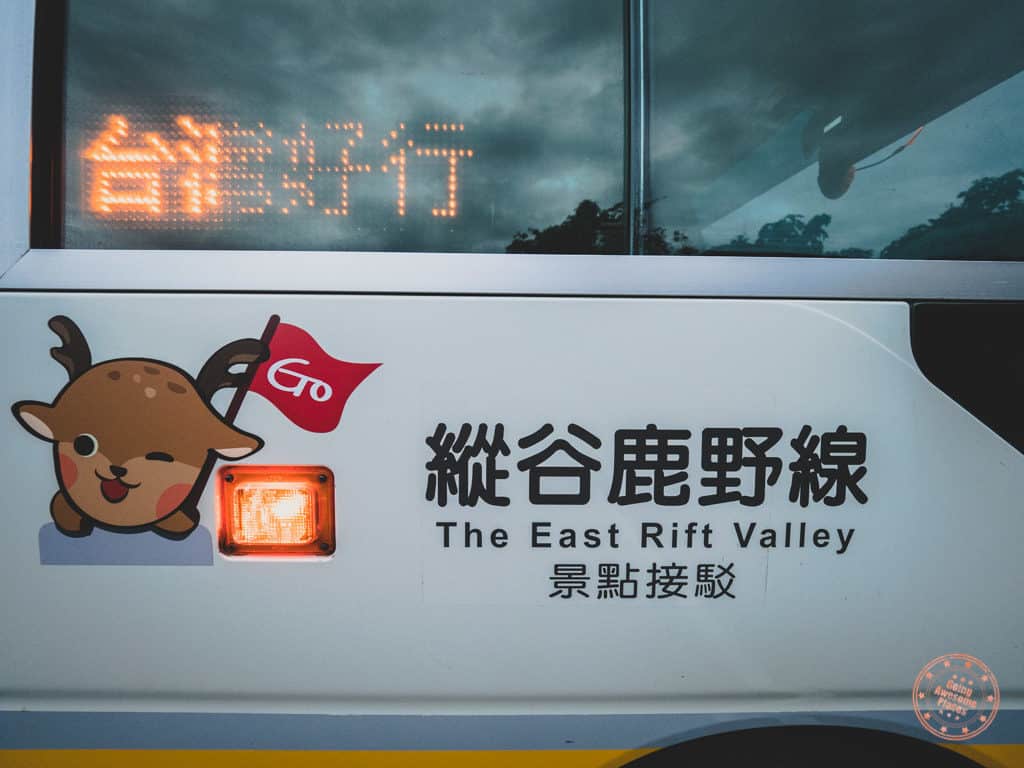
This was a bit of an unexpected adventure for us. We knew from our printed bus schedules that there was one last tourist shuttle bus at 5:10PM. We started our way down when we learned that there was a cheaper way back to Taitung via a train from Luye. We got to the train station at 5:27PM but we soon learned that we had to wait until 6:40PM which gave us time to grab a spontaneous dinner with our new Taiwanese friend. In retrospect we should’ve just stayed on the bus because we would’ve gotten back in the city by 6:30PM.
WHAT TO DO
★ Soaring Paragliding (翱翔飛行傘)
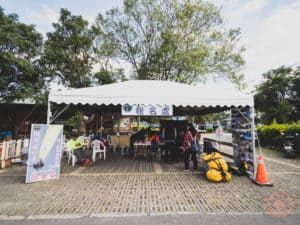
The two places I knew we could do paragliding in Taiwan was near Taitung and Hualien. With two days in Taitung, I knew that this was the best spot to do it and it worked out fabulously for us. Perched up on a giant hillside, Luye Gaotai is the perfect place for paragliding with its cliff that overlooks a chessboard of farmland.
For the full experience, read more about it.
Cost:
- $NT 2500 for a minimum 10 minutes or $1800 for 5 minutes ($60 – $84 USD)
- $NT 400 to rent an action cam (GoPro extendable stick free to rent if you bring your own device)
Contact:
- Phone: Mr. Chen +886-956 377 533
- Website: Facebook Page
TIPS: If you look online, you will no doubt find activity aggregators selling packages for paragliding but the truth is, there’s only one operator in the Luye Gaotai area and it’s Soaring Paragliding. Also advisable to call a day before you get to Taitung to find out what the weather conditions are like. It helps to speak Mandarin but with how friendly they are there, I’m sure you’ll be fine with English.
TIPS: Make sure to bring your passport for registration purposes.
WHERE TO EAT
★ DINNER: Fried Chicken and Tofu
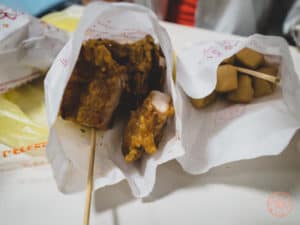
Another on-the-fly meal we had as a result of our transit improvising. With the help of our local friend that we met along the way, he pointed out a popular fried chicken spot along the main street of Luye which turned out to be quite amazing. The chicken was fried to perfection in that Taiwanese popcorn chicken flavour tossed with salt and pepper. Equally as incredible was the fried tofu which was probably an even more of a surprise of the night.
WHERE TO STAY
★ MATA Indigenous Cultural Resort
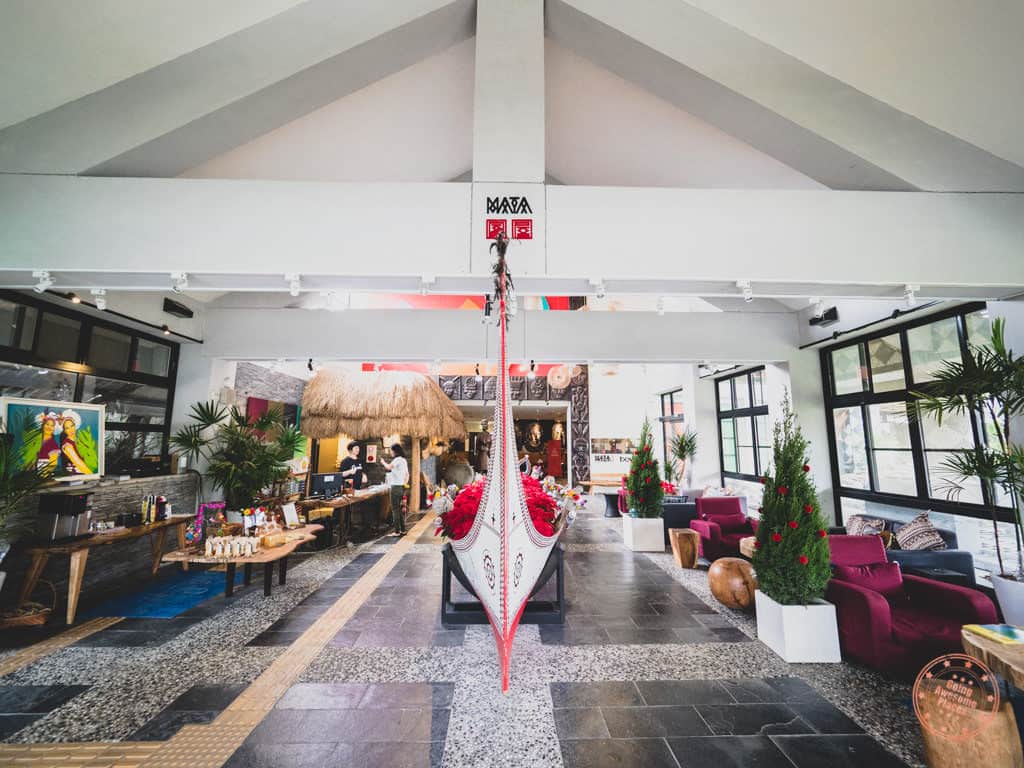
I honestly have mixed feelings about this “resort”. In seeing the name of the property, you’d expect that they’d have a full-fledged indigenous cultural experience available for guests but upon arrival, all we got from the receptionist was a feeling of “there might be a performance tonight…maybe?”
The property itself is beautifully built with a giant replica of a wooden boat used by one of the tribes and other various artifacts on display. Outside, there’s also a large field that I can only presume is used as a stage for performances but perhaps it’s only used during high season or if there are large tour groups.
On one hand, I loved the hotel for its clean and spacious room, and amazing breakfast but couldn’t help feel shafted that we got absolutely no culture other than the visuals and CD that was played in the lobby.
TIPS: Bike rentals are free for 3 hours but if you want to take it out for longer just let them know. If they’re not busy, it shouldn’t be an issue.
CHECK RATES
Table of Contents
>>
Day 8 – Ridin’ in Taitung
<<

Taitung is truly a remarkable stop along the journey around Taiwan as it faces the sea, is set against mountains and is rich in aboriginal heritage. In fact, the city and its surroundings boasts the most prehistoric sites in Taiwan, which means there are many natural offerings and cultural centres that explore the long history of indigenous people.
While we would have liked to have visited one of these cultural centres, our schedule and timing meant that it wasn’t possible. As a result, we decided to take our free bike rentals from the hotel and explore the city on two wheels. This turned out to be a lot of fun, being able to leisurely weave through public spaces, parks, and the downtown area. The best part of the day turned out to be the food.
TIPS: Cultural centres are closed on Mondays so if you hope to visit them, schedule around this.
WHAT TO DO
★Taitung Forest Park & Seashore Park
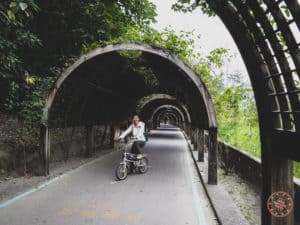
These two parks are perfectly designed for the bicycle. With its expansive network, you’re free to wind through the park and experience Taitung’s laid back lifestyle and clean ocean air. The most surprising parts here are certainly the undeveloped rocky seashore which has quite the unique view, an enormous man-made lake that is popular for swimmers and rowers, and birds nest-like lookout platform.
Entrance fee: $NT 30 for the Forest Park
TIPS: If your hotel doesn’t have bike rentals, the forest park has bikes for rent for $NT 100 for 3 hours.
★ Old Taitung Railway Station
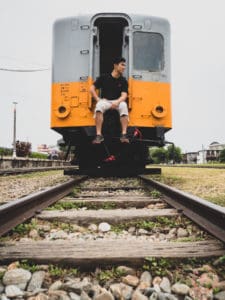
In the centre of the city is the old train station that used to run through. It’s an open-air museum/art village with the remains of an old train that you can climb into, and a repair terminal complete with the remains of signal lights. In the surrounding space, you’ll also see the development of new art spaces that are just in the final stages of building.
What we missed: Sights along the East Coast Line: Xiauyeliu Scenic Area(小野柳), Jialulan(加路蘭) Donghe Steamed Buns(東河包子), Amis Folk Center(阿美民俗中心), and Sanxiantai(三仙台遊憩區).
WHERE TO EAT
★ LUNCH: Rong Shu Xia Rice Noodles (榕樹下米苔目)
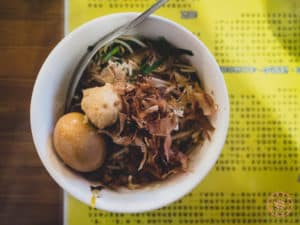
This restaurant is highly recommended in Taitung and with good reason. Along one of the main drags of the city, this place is hard to miss with its long lines that wind out from the restaurant. What makes this place special is its rice noodles which have the thickness of udon and freshness of hand-pulled noodles. They’re also special in that they’re very short and in an elongated teardrop shape.
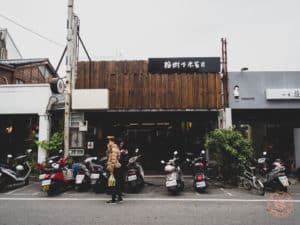
The ordering process is a bit different than what you might be used to but essentially while in line, you have to fill out a piece of paper. You also need to have a table number by the time you order so if you can, get your partner to grab a seat somewhere first. Drinks are also pre-made so after you order you grab them from the person working by the refrigerator. Sounds complicated I know but you’ll figure it out eventually. They also have English menus so ask for that if you don’t get one right away.
Other must-try items are the local pork with vegetables (side dishes behind the glass display) and the pineapple iced tea.
★ SNACK: Chen’s Mochi
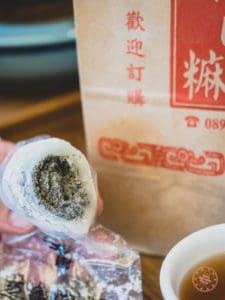
If there’s a king of mochi, I think I’ve found it. Look through the glass window and watch the mochi masters knead fresh sticky rice flour and roll them into balls to the eventual final product. They serve up the most delicious of sticky rice desserts with my favourite fillings including black sesame, peanut, and red bean.
TIPS: If you miss Chen’s in Taitung, don’t worry because there’s always Hualien which is also well-known for mochi.
★ DINNER: Dongdamen Night Market
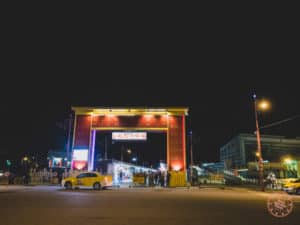
This was perhaps the most disappointing of night markets. Ironically it was probably the most organized, with the night market on a dedicated plot of land, wide streets, and permanent stalls. To me, it lacked the grunginess of night markets, character, and a little bit of the chaos. We also showed up late in the night which meant the streets weren’t very busy. Personally, I think I prefer large crowds at night markets because it also means there’s quick turnover of food and nothing sits for too long.
Where we actually wanted to go was Dai’s Dumpling but when we got there, it was closed for the holidays.
WHERE TO STAY
★ Azure Hotel
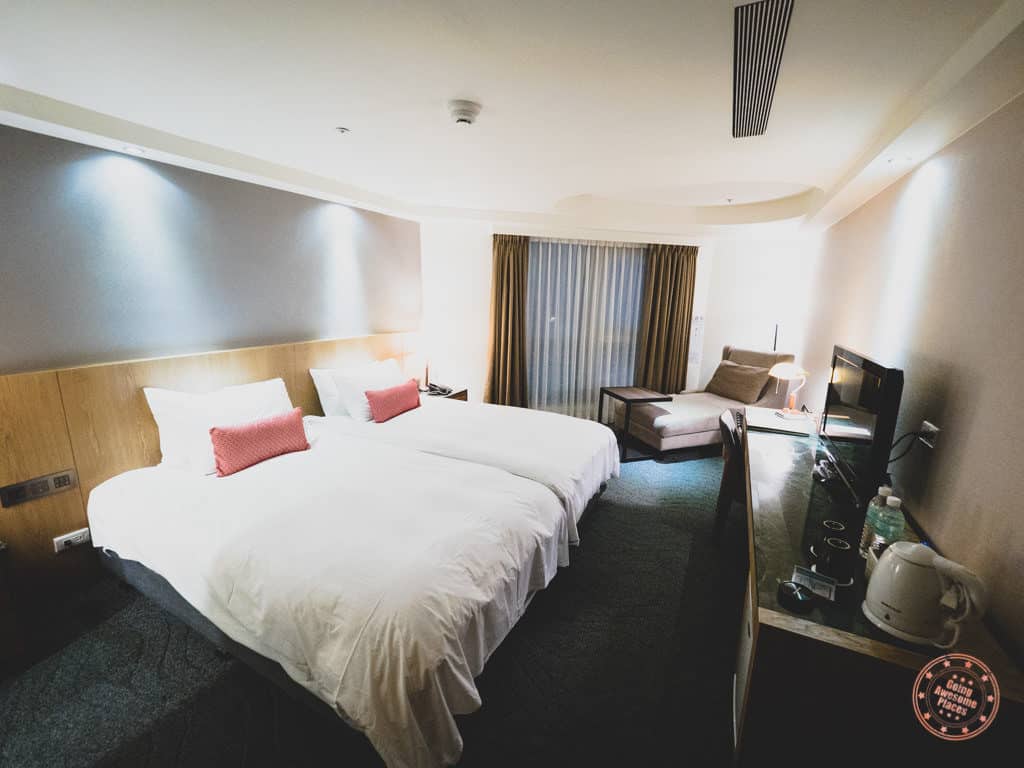
The check-in process was very smooth, and the room was 4 to 5-star calibre. What made this hotel a great to place to stay was the fact that it is on the main street that runs through Hualien which means everything is walking distance. And then there’s the breakfast buffet which is as good as any other that you’ll see in Taiwan except it also has its own DIY noodle bar – the cherry on top!
Since we knew we were going to do a two day hike through Taroko, we spent the evening re-organizing our packs to only carry the essentials. For everything else, we stuffed another backpack to leave behind. The hotel was great in allowing us store this bag for an extra night.
TIPS: To get to the hotel from the train station, there’s no easy way with the bus so hop on a cab once you arrive in Hualien.
CHECK RATES
Table of Contents
>>
Day 9 – Taroko Tribe In The Mountains
<<

Taroko, in the local Truku aboriginal language, means “magnificent and beautiful”. When you set your eyes on mountainous landscape, bio-diverse vegetation, turquoise rivers, and marble-walled canyons, you’ll see why this is one of Asia’s top scenic wonder.
There are magic places in the world. This is one of them.
While many travellers take one of the stream of tour buses that come through the main gate and jam all the sights in a day, we wanted to do something a little more unconventional. Everyone’s seen photos of the 18km stretch of Taroko Gorge that make it to postcards but few have seen it from the point of view of the indigenous tribes that still live in the tranquility of the mountains. With our 2 day trek up to the villages of Datong and Dali, there was the promise of us being able to dig deep into local culture and take in a slice off nature that travellers rarely ever see.
WHAT TO DO
★ 2-Day Guided Hiking Tour
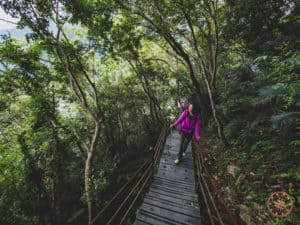
If your goal in Taroko National Park is to hike through challenging terrain, interact with indigenous tribe members, and take in incredible mountain scenery way above the clouds, this is the activity for you. It is by no means easy, so my word of caution is that if you want to do this trek, you need to be physically fit and have some experience with long hikes with long portions of uphill and downhill.
The hike doesn’t have a specific name that you can look for but what it is a chaining of several trails that ultimately take you up to the villages of Dali and Datong before you descend back down to the end of the Shakadang Trail.

Your first day in Taroko consists stair climbing along Dekalung Trail, a visit to Dali Village, before meandering through the side of the mountain along an old logging road. All of this leads to the arrival of a B&B built by a local Truku tribe member, named Dadao. With diminishing sunlight, you’ll be able to look out into the nearby mountain peaks, mystical clouds, and Datong village below.
After settling in and showering (yes there is running water!), your host cooks a fabulous dinner.
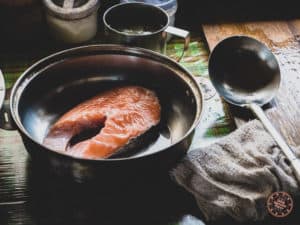
My favourite part was sitting around of the campfire and having simple conversation with the guide translating for us while sipping on a cup of hot tea and listening to the crackle of the firewood.
Hiking Trails: Dekalung Trail -> Dali Trail -> Shakadang Logging Road
- This tour was booked through MyTaiwanTour and the details are as follows:
Includes:
- Trek guide
- Hiking permits
- Transportation (pick up and drop off)
- 1 night accommodation at the tribe B&B
- Dinner and breakfast
- Travel insurance
Cost:
- 1 person: $NT 22,600
- 2 people total: $NT 24,800
- 3 people total: $NT 27,000
- 4 people total: $NT 28,700
TIPS: Your guide picks you up and will park at the national park overnight. This means that you don’t actually need to store your bags at your hotel.
WHERE TO EAT
★ LUNCH: 7-11 Food
Before heading into Taroko National Park, we made a stop at a 7-Eleven and picked up additional supplies for our trek. We stocked up on water and also a few onigiri (Japanese rice triangles) which is perfect hiking food. Plus we had extra mochis from Chen’s.
★ DINNER: Cooked by Ah-Ma
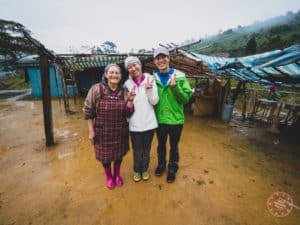
I don’t know if we were just ridiculously hungry but our 7-course meal hit all the right spots. With fresh supplies brought from the city, Ah-ma cooked an assortment of salmon, chicken, fresh vegetables, tofu, and soup that was clearly too much for the 4 of us. What amazed me was how she was able to cook such delicious dishes even with the limited amount of supplies, equipment, and appliances.
WHERE TO STAY
★ Truku Tribe B&B
Considering you’re high up in the mountains and away from civilization, it’s a marvel that a house of concrete, wood, and corrugated metal sheets could even exist. I had pretty low expectations of the B&B before coming but was surprised to learn that they had running water, hot water tank, a proper toilet, electricity for lights, and propane for cooking. To top that, the dorm rooms are fashioned similar to Japanese ryokans with clean laminate flooring, sliding doors and furnished with mats, blankets, and pillows. Sure it’s not a 4-star hotel but more important to me was the hospitality of the host and that surprised us with the luxury of shower and toilets.challenging
To temper your expectations, you have to understand that the B&B is a structure built by Dadao himself for the express purpose of being able to host hikers. This means that this isn’t a representation of what a real village home is like. The other thing is that this home is perched high up in the mountains away from any other villagers so you’re also not going to be amongst a community of Truku families.
Table of Contents
>>
Day 10 – Shakadang Is My New Favourite Word
<<
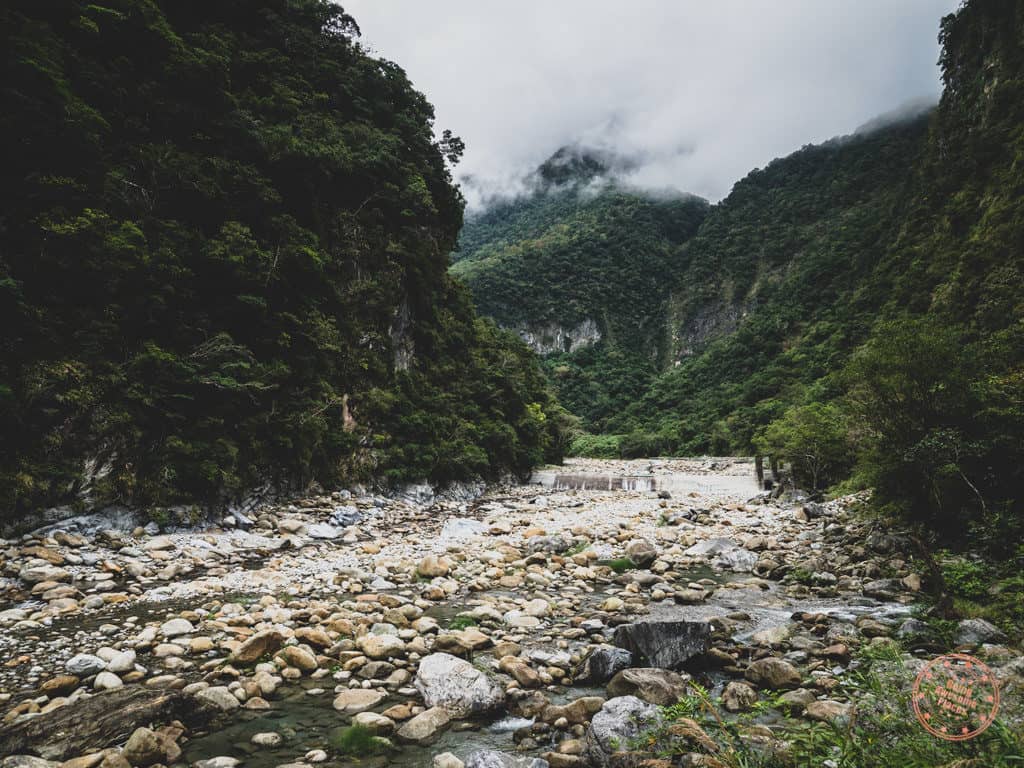
This day is about contrasts. The views you get at the top of the mountain dramatically change as you make your way back down to the blue-green Shakadang river which is filled with large perfectly-round boulders, and jagged walls of marble.
You’ll feel pretty gross by the end of it all but when you finally get back to Taipei, that shower you take will be the best thing ever.
WHAT TO DO
★ 2-Day Guided Hiking Tour
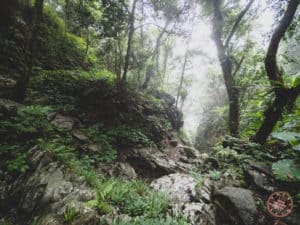
The second day of hiking is possibly even more challenging than the first because a section of the hike takes you through a trail that has typhoon damage. On top of the on and off rain, and muddy conditions we had, there are a number of natural and man-made obstacles you’ll need to ninja through. None of it is particularly dangerous but you’ll want to make sure you watch your step. I came out of it with my legs completely shot and feeling wobbly every time I stopped for a break.
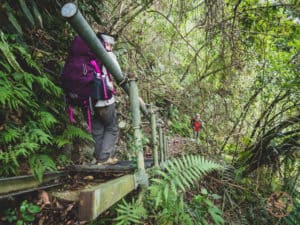
The best part of the day was when we finally made it to the Shakadang Trail after 3.5 hours of downhill punishment. I remember holding up my arms in the air and shouting “WE DID IT!!!” in relief.
Along this famous trail is where we got our first glimpse of the beauty that Taroko National Park is known for – naturally carved out canyons where turquoise water pass through rock overhangs and multi-coloured marble boulders. Along the way, there’s also a small Truku tribe market place where we devoured the best sausage of the entire trip.
Highlights of what you’ll see:
- Liwu mountain peak with views of the ocean on the other side
- Datong Village
- Dramatically changing scenery as you make your way down
- Shakadang Trail
Hiking Trails: Datong Village Trail -> Tongli Trail -> Trail down to Sanjianwu -> Shakadang Trail
TIPS: The mountain is always 2-3 degrees cooler than at ground level so make sure you prepare your layers when packing for a trek like this one. You also never know when you might get hit with rain so you’ll also want to pack the appropriate waterproof gear which at a minimum should include a jacket, waterproof shoes, and rain cover for your bag.
★ Ximending Youth Shopping District
With its abundance of bright lights, shops lining the maze of streets, trendy shopping, and a nightlife, it’s no wonder that it’s been called the “Harajuku” of Taipei. Unlike a traditional night market, there’s more than food here which makes it a great place to wander.
WHERE TO EAT
★ BREAKFAST: Tribe Breakfast
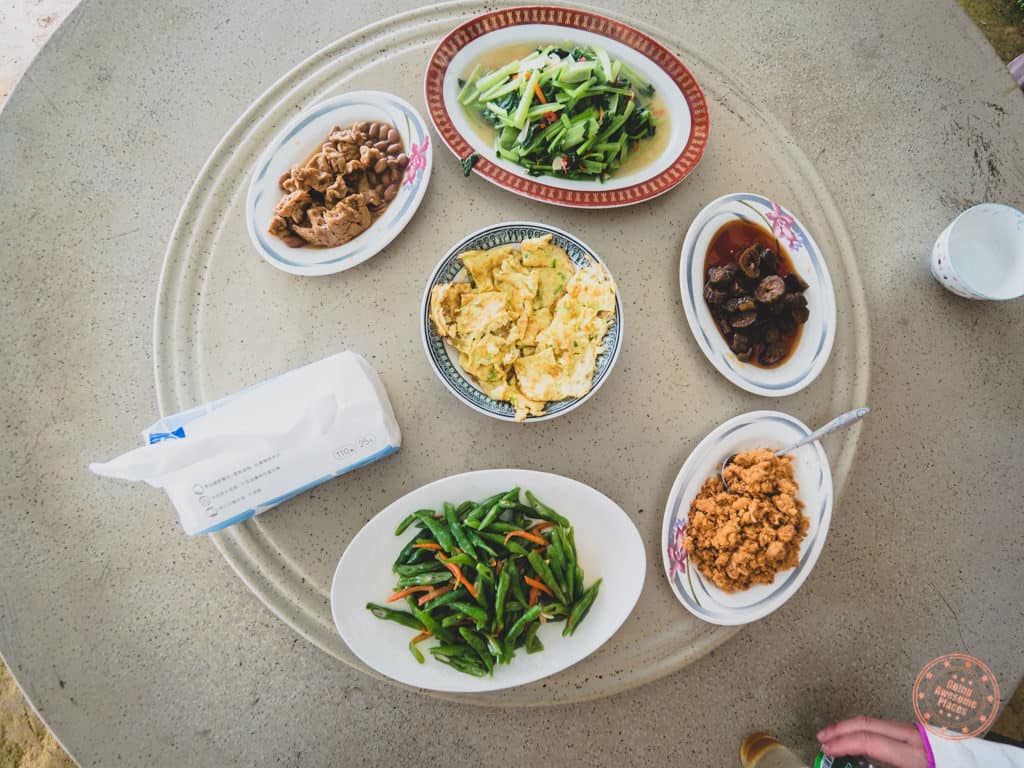
Ah-Ma cooked another great meal for us that was way more food than we could finish. It was all the energy we needed to last until dinner as we had quite the catchup we needed to do on our way down.
★ SNACK: Shakadang Trail Sausage
Whether you do the Shakadang Trail on your own or as part of a trek, you MUST stop at this stall for these home-made sausages. With a magical mix of ginger, honey and who knows what else, you won’t find this anywhere else in Taiwan.
★ DINNER: Ay-Chung Flour Rice Noodle
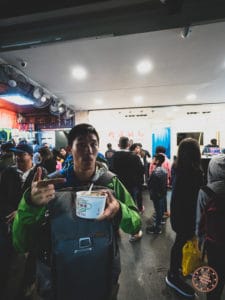
This shop is impossible to miss with its large crowds of tourists either slurping away or queueing in anticipation. The good news is that the lines move very quickly as they efficiently fill up bowl after bowl. What makes them special is that they make a unique style of rice noodle that is completely different from the ones we had in Taitung. Extremely thin and flat, these noodles are similar to some of the noodles you find in Vietnamese Pho but in a thick and somewhat gelatinous soup base. Mixed in the broth are diced bits of pork intestines which may turn some off but is honestly as indistinguishable as tendon or tripe in pho.
HOW TO GET THERE
Taking the train back to Taipei turned out to be a bit more of an adventure than we expected mainly because we took way too long to get back down and we missed our originally booked train.
The way the drama played out is our original train was supposed to be at 4:30PM but by the time we left Taroko National Park, it was already 3:45PM. Rushing to the Hualien train station, our guide tried to get our tickets switched to a later train but were told that we could either swap them for a slower train that would arrive late in the evening. Otherwise, if we wanted anything earlier, we would have to forfeit these tickets and get them ourselves. Not wanting to get into Taipei so late especially considering how long of a day we’ve had already, we made the no-brainer decision to buy new train tickets for $NT 340 per person ($11 USD).
WHERE TO STAY
★ WESTGATE Hotel (2 nights)
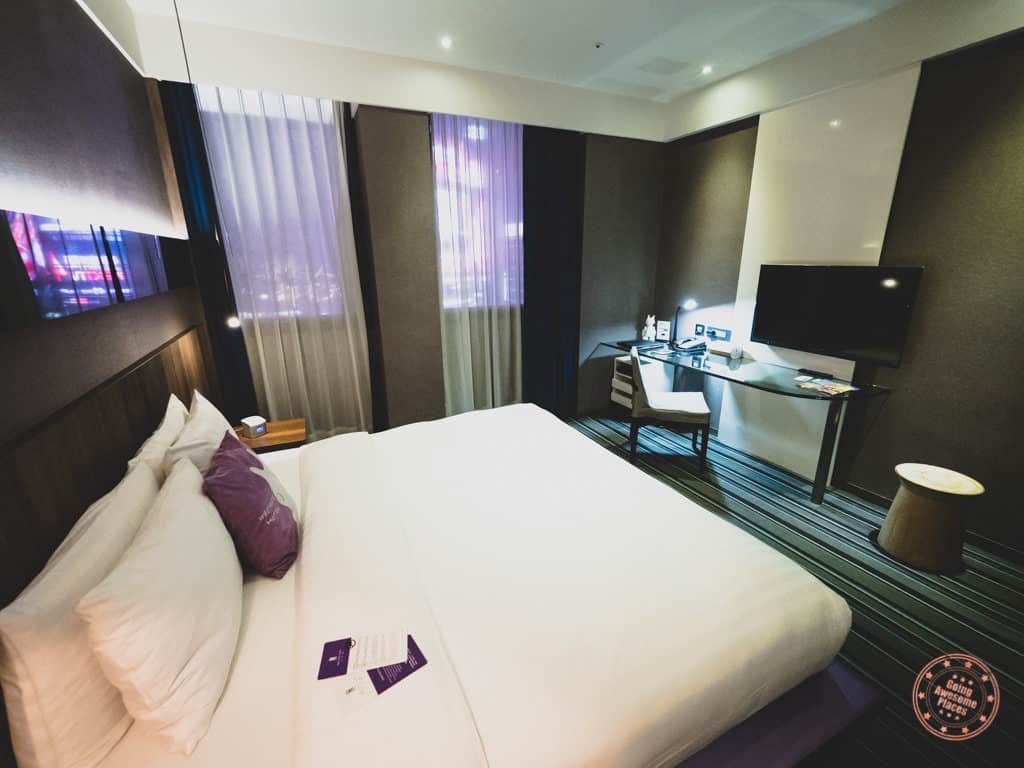
We couldn’t have asked for a better hotel in Taipei. Located right at the doorstep of Ximending and seconds away from the subway, it was overly convenient to get around the city and at the end of the day, we could always come back to the hotel and get our fill of more food and snacks before heading home.
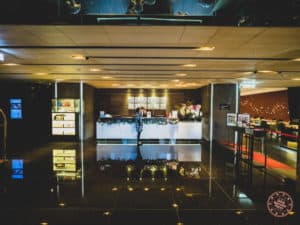
Upon entering the hotel, you immediately notice that the boutique and modern lobby is both welcoming and luxurious. From the check-in to check-out the staff were extremely courteous and friendly, willing to help at every turn. What I loved about the property is how one-of-a-kind artwork can be found all over including my favourite sculpture of two boys free falling off Taipei 101 with their suitcase in hand.
The rooms themselves are spacious and a modern open concept where we felt immediately at home after a weary day of travel. The bathroom is elegant and clean while the bedroom is cozy, and beds overly comfortable.
For breakfast, expect to be tempted with plenty of tasty Asian and Western foods, and great service from the wait staff.
CHECK RATES
Table of Contents
>>
Day 11 – Zen, Heat and Fishing
<<
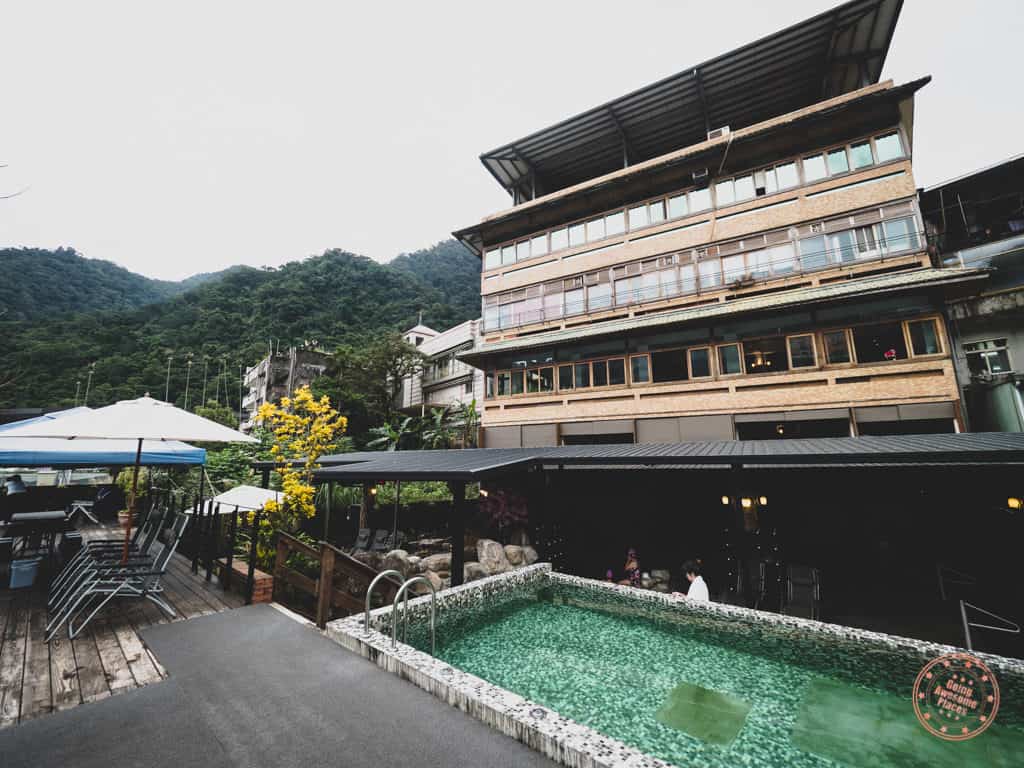
With one final full day in Taiwan, there are a lot of options open to you but if your preference is to take it easy and end on a relaxing note with a dash of excitement, pull off an unconventional day trip that combines the best of what Taipei has to offer.
Wulai is a mountainous district south of Taipei. It’s known for its old street, hot springs, natural sights, and the area’s indigenous Atayal people. It’s an easy day trip from Taipei that gets you out of the city and into a place that is very walkable, easy to explore, and not too crowded.
If there are other things that you want to check out, treat this as a free day. There are a lot of choices here so if you’re looking for a few ideas, here’s what we were also contemplating:
- Hiking Teapot Mountain
- Beitou Hot Springs (i.e. SweetMe Hotspring Resort)
- Hiking Yangmingshan
- Yehliu Geopark
- Danshui/Tamsui Old Street
- Maokong Gondola
- Everything else in Taipei you might not have seen such as the National Palace Museum, Chiang Kai-Shek Memorial Hall, Taipei 101, other night markets
WHAT TO DO
★ Tai Chi at Muzha Zhongshun Temple (木柵忠順廟保儀大夫)
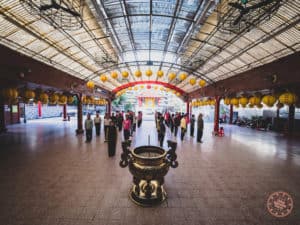
Every morning, there are temples all over Taipei where the local community gets together to practice Tai Chi. Instead of paying for lessons, why not join one of these sessions and try your best not to embarrass yourself while at the same time, learn how hard it is. What looks like a moving form of yoga and meditation is actually a fluid art of motion with its ying-yang balance of dance and martial arts while all in slow motion.
Now it will be pretty daunting to jump into one of these sessions if you don’t know anyone but thankfully we had someone like Joshua from MyTaiwanTour to introduce us and give us permission to film the experience. Comfortably at the back of the group, we did our best to imitate the experienced Tai Chi-ers, occasionally tripping on my own feet and stopping to stare at the combination of pushing and parrying.
A little bit about Joshua Samuel Brown
Joshua is someone I was extremely grateful for during my travels in Taiwan. He was instrumental in providing tips on local spots to explore in the country and we were also lucky enough to have him show us around a few spots you might’ve seen from the Taiwan in 12 Days YouTube series. Joshua is the former Editor-in-Chief at MyTaiwanTour, acclaimed author of the upcoming Formosa Moon, co-author of numerous Lonely Planets, all-around expert in Taiwan, and just a great guy. Make sure to read the Joshua Samuel Brown blog which has a true local’s perspective of the country and much more!
With how friendly the Taiwanese are, you can easily find a local temple to visit and find out whether they’d welcome a drop-in student.
Schedule: Everyday at 8:30AM – 10AM
★ Wulai Old Street
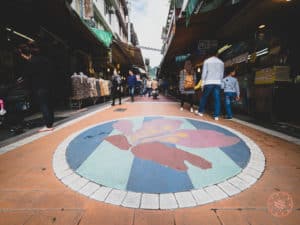
The old street of Wulai is a short distance but packs in quite a number of things. If you enjoy street food, left and right you’ll find a ton of different shops that sell snacks, drinks and cooked food. You’ll also find several independent shops specializing in clothing, art, foods, and crafts.
Another interesting fact about Wulai is that it’s the closest accessible aboriginal village from Taipei which makes it a great place to learn about the fascinating culture and people of the Atayal tribe with the Wulai Atayal Museum.
Don’t forget to walk around and outside of the street to find attractions such as Wulai Falls and Yunxian Playground.
★ Yen Town Hot Springs

Along the old street of Wulai, you’ll find this hidden gem and the perfect hot springs for my wife and I. Many hot springs in Taiwan are of the onsen (Japanese hot springs) variety where male and females are split, and are nude. Understanding that this may not be comfortable for everyone, it is actually a challenge to find hot springs that are couple friendly, aren’t crowded, and have clean facilities.
All you need to bring with you to Yen Town is your swimwear, a shower cap and you’re all set. In this intimate and beautifully set hot spring, you’ll find a rejuvenating set of pools that vary from ice cold to 40C+. To mix things up, you’ll also find an open air room temperature swimming pool, intense pulsating showers, and lane of rounded pebbles for feet therapy.
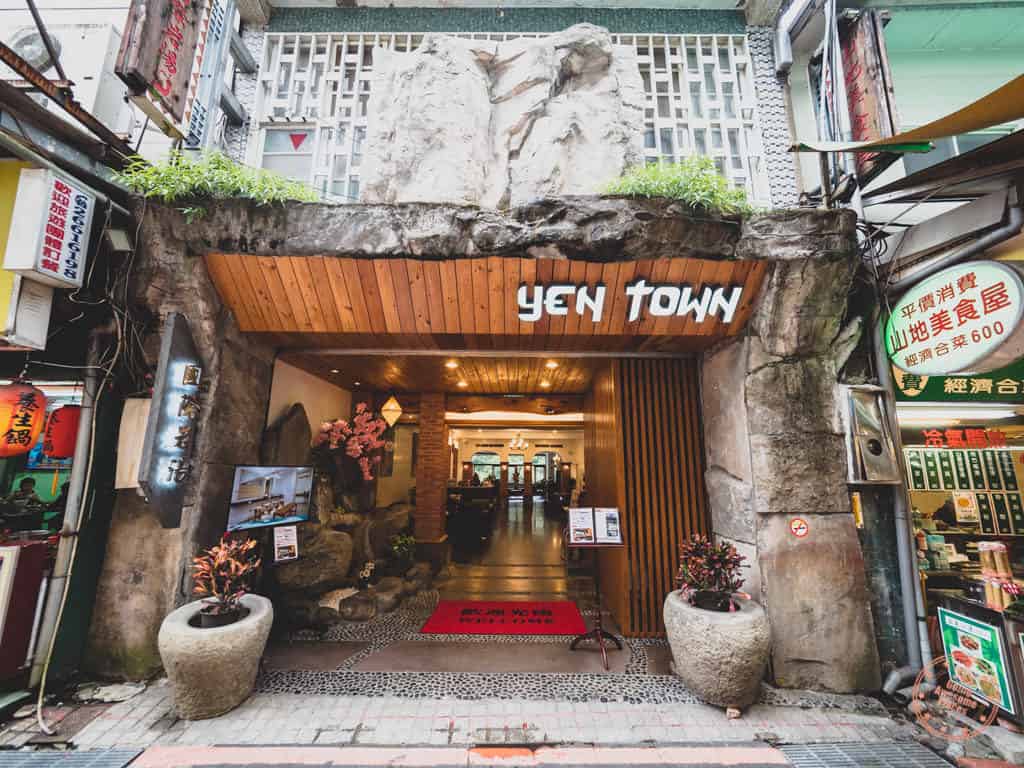
Price: $NT 400 per person
TIPS: Yes you read that right, in Taiwan it is mandatory to wear head caps to cover your hair. Yen Town expect for you to have your own. This means you can either purchase one or come prepared with basic shower caps from the hotel.
TIPS: A custom that is strictly enforced here for sanitary reasons is to rinse your feet with the water from the pool before entering.
★ Ximending Youth Shopping District
The convenience of WESTGATE Hotel meant that we had to take advantage of it with our daily walk around to see what fun boutique shops we could find and other treats we could buy.
WHERE TO EAT
★ LUNCH: Local Aboriginal Restaurant on Wulai Old Street (烏來小吃店)
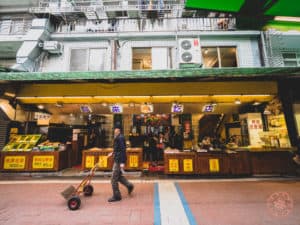
There isn’t exactly an English name for this restaurant so I’ve included the Chinese name which you’ll see in the sign. It’s actually right across from the Wulai Atayal Museum. This is a restaurant cooked by aboriginal locals and is a chance to try a variety of dishes that are hard to find elsewhere.
Not knowing what was good there, we tried an assortment of fish, vegetables, soup, pork, and rice that turned out to be quite good. The highlight was definitely the rice cooked in bamboo and the fried fish.
★ DINNER: Aquatic Addiction Development
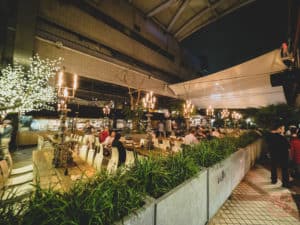
Aquatic Addiction Development (AAD) is quickly becoming a must-see place for seafood-loving foodies. Carved out of the Taiwan Fish Market, this is a brand new and modern type of market that has a little bit for everyone. Near the entrance you have what looks like a wholesale area with tanks filled with fresh catches. From there, you step into the main section of AAD which is a cross between a really up-scale supermarket and sit down sushi and seafood bar. Upstairs, there’s a hotpot restaurant and then you have the entire outdoor wing of the market which has more food, another restaurant, and additional seating.
We ended up ordering a tray of salmon sashimi, scallops and Calpis for $NT 590 ($20 USD).
TIPS: You’d think a market like this accepted credit card but it doesn’t. Make sure to bring enough cash.
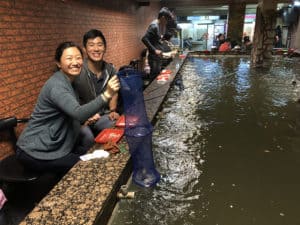
★ DINNER: Prawn Fishing (全佳樂釣蝦場)
You can’t leave without doing the favourite past-time of Taiwanese. Indoor shrimp fishing has become a popular form of entertainment, transforming something that is still an important industry into sport. Huddling around a smoke-filled room centred around a shallow pool, serious pros and wannabe anglers wait patiently for bobbing buoys. Beneath the depths of the bubbling water are large prawns waiting to steal your bait.
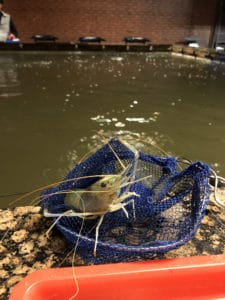
Okay, I admit it’s probably not for everyone but for something that you won’t find anywhere else in the world, you just have to experience it for yourself.
This is how it works. You essentially purchase fishing game time and starts at 1 hour and goes up to 3 hours. Dried shrimp bait and custom fishing rods are provided and the rest is up to you to catch as many as you can in the time you paid for. When you’re done, the shop owner cooks the prawns on a skewer dusted with salt.
It’s a bit of a test of patience that Anthony Bourdain clearly didn’t have much of in Season 2 of The Layover. Don’t expect your tummies to get filled here but the satisfaction of catching anything at all is something to rejoice here. In the hour we were there, we caught 6 but the owner felt pity for us so he topped it up to 10.
Address: 台北市中山區錦州街190號
Cost: Starts at $NT 300 for an hour
TIPS: HAH got none for ya. Good luck!
HOW TO GET THERE
Getting to Wulai
Take the MRT all the way to the Xindian Station (last stop on Green Line 3) and find Bus Stop B located along Beiyi Road (北宜路一段). Wait for bus 849 bound for Wulai and all you have to do is get off at the last stop.
WHERE TO STAY
★ WESTGATE Hotel (2 nights)
Table of Contents
>>
Day 12 – Mad Dash for Pineapple Pastry
<<

Depending on when your flight leaves, you may or may not have time to squeeze in one last bit of Taiwanese goodness before you go. The best souvenir to bring home for friends and family in my opinion is pineapple pastry since it’s something that just isn’t as good outside of Taiwan.
You’re probably wondering, well can’t you get pineapple pastry at any Asian supermarket? Yes, that’s true but all of these are packed with preservatives and as a result contain smaller traces of pineapple. The real stuff from Taiwan is made with fresh ingredients and will only last 2-4 weeks before expiring. That’s why I recommend buying these squares of sweet goodness on your last day so you have a chance to pass it along to friends and family.
TIPS: Remember to get your tax refund before you go through security/customs. At the primary international terminal (T2), go down one level from departures and you’ll find it. SunnyHills is also on this floor.
WHAT TO DO
★ Chia Te Bakery
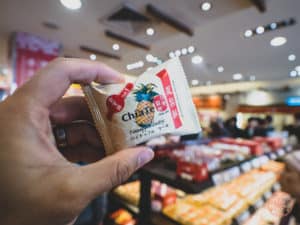
Perhaps the most famous pineapple pastry bakery in town and while they make a variety of Chinese bakery goods, people from all over the world come here for one and one thing only – pineapple pastry. These are made in the traditional style where these square-sized desserts are filled with mildly sweet and moist strings of pineapple and surrounded by a soft, buttery crust. There is only one store and they’ve been open since 1975.
★ SunnyHills
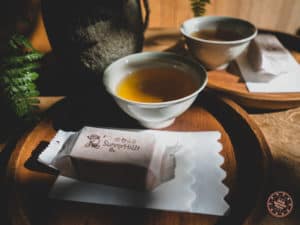
You’d think one bakery was enough but you really have to try the modern, and some say, better take on pineapple pastry. SunnyHills is everything that Chia Te isn’t. Where Chia Te is reminiscent of your typical no-nonsense Chinese bakery with bright lights, shelving with product, and queue for the cashier, SunnyHills is a much more refined, contemporary experience where it is more of a tea house than it is a bakery.
When you enter one of their stores, you’re greeted with friendly service staff and even before promoting any product, they get you seated. This is when they serve you a complimentary cup of tea and one of their products. This gives you a chance to use all of your senses to appreciate their food. When you’re ready, you go up to the counter and place your order. You’ll most likely be buying pineapple pastry and when you do, it comes in a beautiful packaged box and a recyclable linen bag. Like I said, it’s very much an experience.
Focusing in on the pineapple cake itself, what makes it different from Chia Te is in its shape which is rectangular, the density of the crust, and the filling a bit more tangy. Some say it’s more fresh than the competition but I think it’s all in your taste preferences.
TIPS: If you qualify for tax refund, the staff will let you know and they have a separate desk to help you with the filling out of the form. Officially, I believe purchases over $NT 3000 are eligible for tax refund but we were able to get it with a purchase of $NT 2680. This is good for a 5% VAT tax rebate at the airport.
TIPS: If you don’t care for the in-store experience of SunnyHills, note that there is a storefront at the airport. The difference is that at the airport, they only stock the box of 10 and not the box of 16.
WHERE TO EAT
★ LUNCH: Din Tai Fung (Original Xinyi Location)
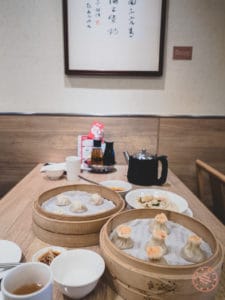
It would be almost embarrassing to leave Taiwan without going to their internationally-famous Ding Tai Fung. Known for their great-tasting xiao long bao (soup dumplings), it’s the kind of perfection that I haven’t been able to find replicated anywhere else and that includes Shanghai where it is known to have originated from.
If you come early enough (10:20AM in our case), you’ll be able to get a table pretty quickly. Otherwise, expect to take a number and wait awhile.
★ SNACK: Ice Galaxy

There were a whole bunch of other dessert spots that we wanted to hit up in Taiwan but with literally 15 minutes left before our airport pick up, I ran over to the closest shaved ice restaurant in Ximending which turned out to be Ice Galaxy. They’re not famous per say but it still lived up to my expectations for shaved snow packed with mango.
If we had more time we would have liked to have visited Roji Shaved Ice or Bingzan.
Table of Contents
WHERE TO STAY IN TAIWAN
Here is the compilation of everywhere that I stayed on my trip and would highly recommend
TAIPEI

SONNIEN HOTEL
Conveniently located hotel where I stayed at the beginning of my trip to Taiwan. This was a super clean and spacious property that included a fabulous breakfast as well. Couldn’t have asked for more.
TripAdvisor
Booking.com
TAIPEI
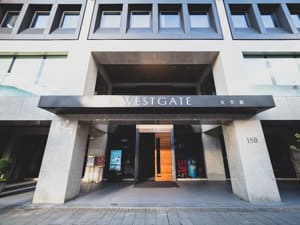
WESTGATE HOTEL
Right next to Ximending in Taipei, this is equally a great hotel to stay at in Taipei. Sonnien Hotel was already pretty modern but WESTGATE takes it up a notch. They have an amazing breakfast as well.
TripAdvisor
Booking.com
ALISHAN
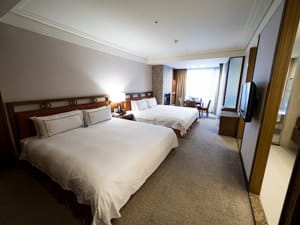
ALISHAN HOUSE
The nicest property in Alishan for sure, we were given this extravagant double king-sized bed complete with balcony and fireplace. It’s also located in the best spot to do your hike around Alishan.
TripAdvisor
Booking.com
KAOHSIUNG
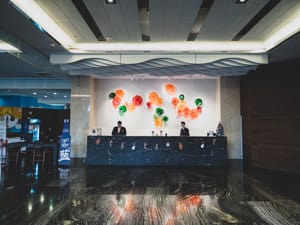
HOYA RESORT HOTEL
One of the newer properties in Kaohsiung. While it was extremely comfortable and spacious here including a smashing breakfast, I did find that it was a bit further from the action that I would’ve liked. That said, it is right next to a night market!
TripAdvisor
Booking.com
KENTING

A-FEI HOTEL
Some call it a hostel but it’s really a hotel right by Nanwan Beach in Kenting. You’ll typically find the owner, A-Fei, who is a blast to be around. This is the perfect place for surfing as well since they have their own lessons and gear rental.
TripAdvisor
Booking.com
TAITUNG

MATA INDIGENOUS CULTURAL RESORT
Quite the unique property that focuses on Taitung’s heritage of indigenous cultures. The rooms are nice but the star feature are the displays and shows that they offer. They have a great breakfast and they offer free bike rentals.
TripAdvisor
Booking.com
HUALIEN
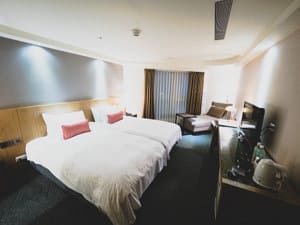
AZURE HOTEL
Centrally located hotel in the city of Hualien. Loved their breakfast as they had their own noodle bar. The room was quite modern, comfortable, spacious, and clean as well.
TripAdvisor
Booking.com
TAROKO NATIONAL PARK
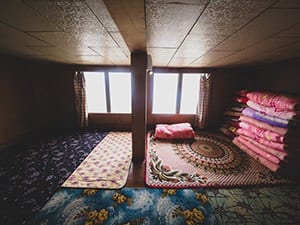
TAROKO MOUNTAIN HIKING HOMESTAY
Not exactly something you can book off the cuff but if you work with a company like MyTaiwanTour, they can put together a custom trip to trek up to the mountains of Taroko and stay with someone like Ah-Ma!
TripAdvisor
MyTaiwanTour
Table of Contents
TAIWAN ITINERARY FINAL THOUGHTS
Taiwan may be a small country, but it’s big on heart, is guaranteed to fill your tummies with delight, and will surprise you over and over again with its amazing activities and attractions.
As I mentioned in the beginning, this guide is really only meant to be a starting point for your planning. As a trip planner myself, I’ve always found that it’s way easier to see what someone else has done and go from there. Feel free to make changes to it and tweak it to your liking based on what you’re interests are and your travel style.
Enjoy and do let me know how your trip goes!
Table of Contents
This trip was sponsored by the Taiwan Tourism Bureau but all opinions are my own because I had one amazing time there and I seriously need to share this with the world!



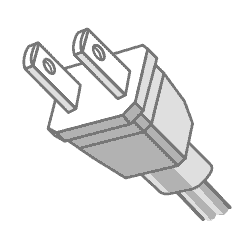
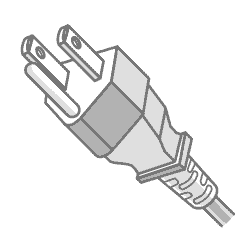




















![Toni Kroos là ai? [ sự thật về tiểu sử đầy đủ Toni Kroos ]](https://evbn.org/wp-content/uploads/New-Project-6635-1671934592.jpg)


